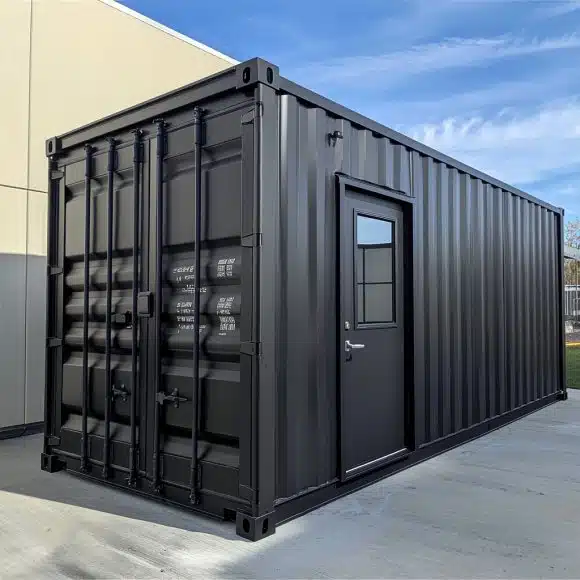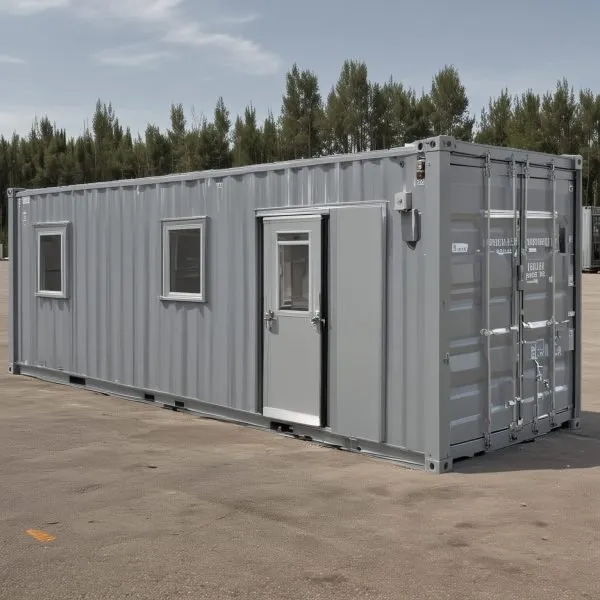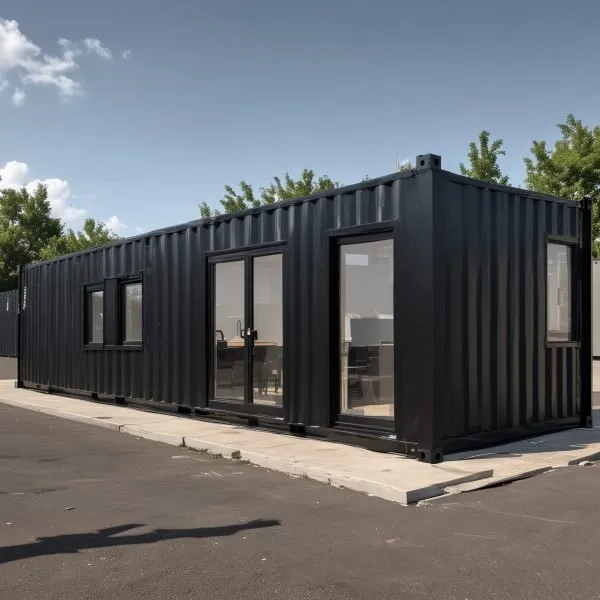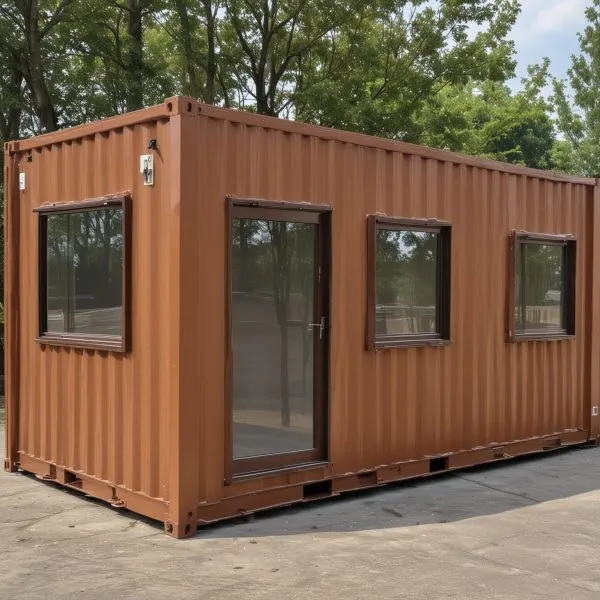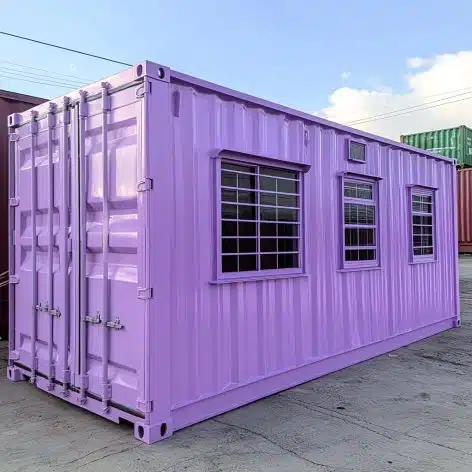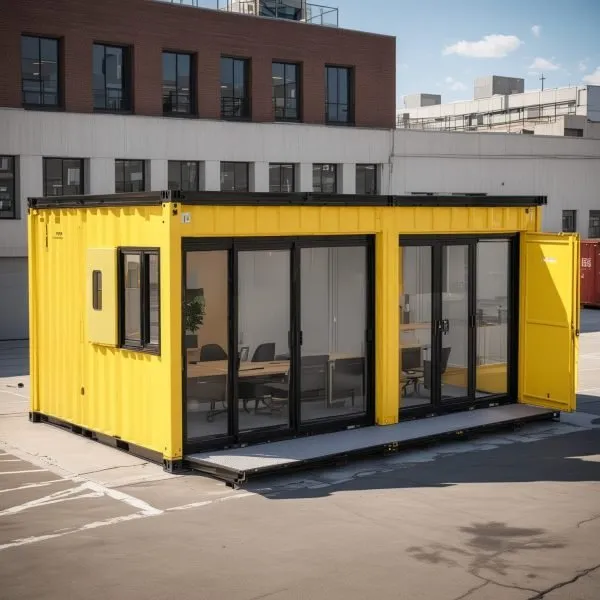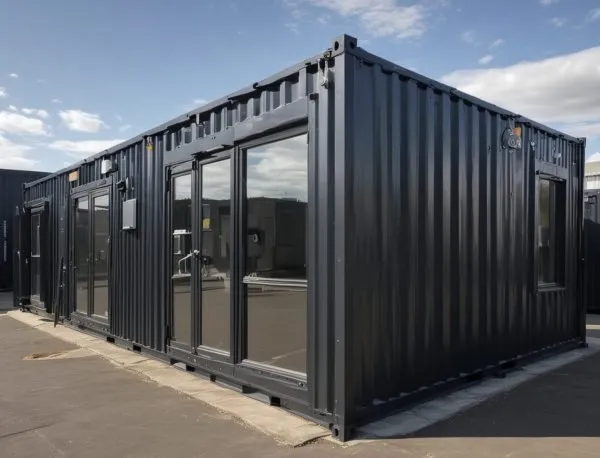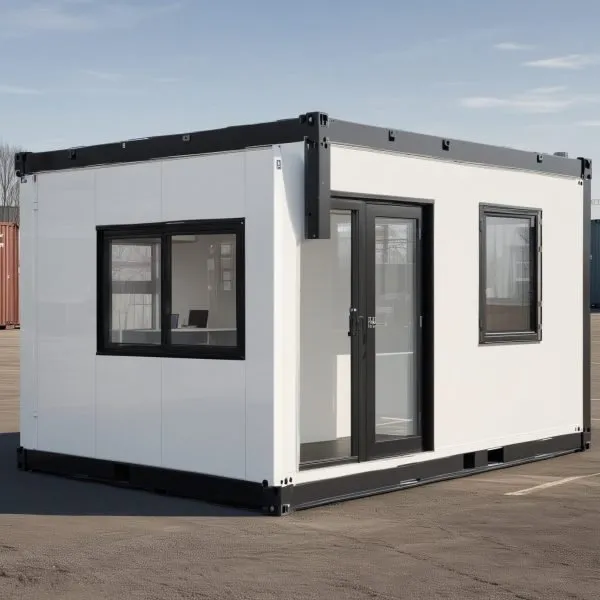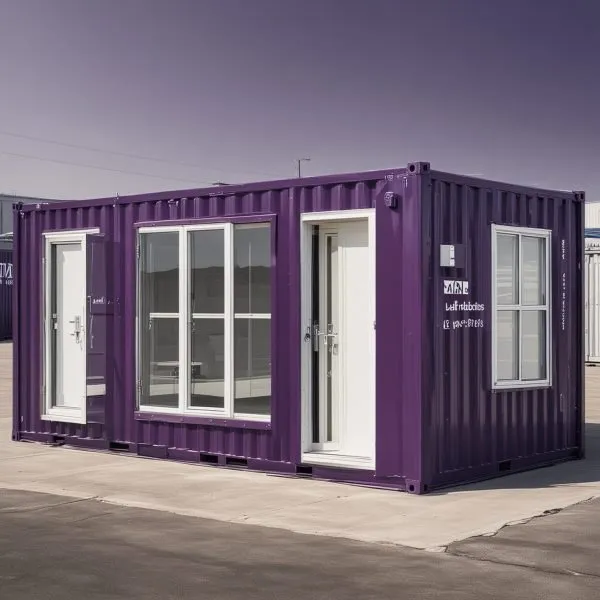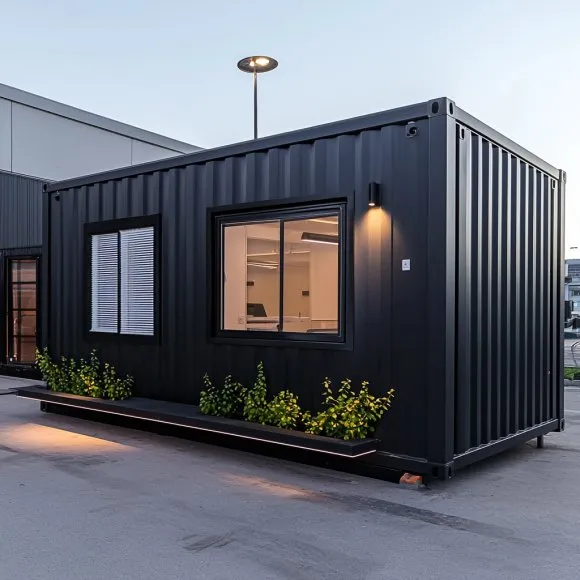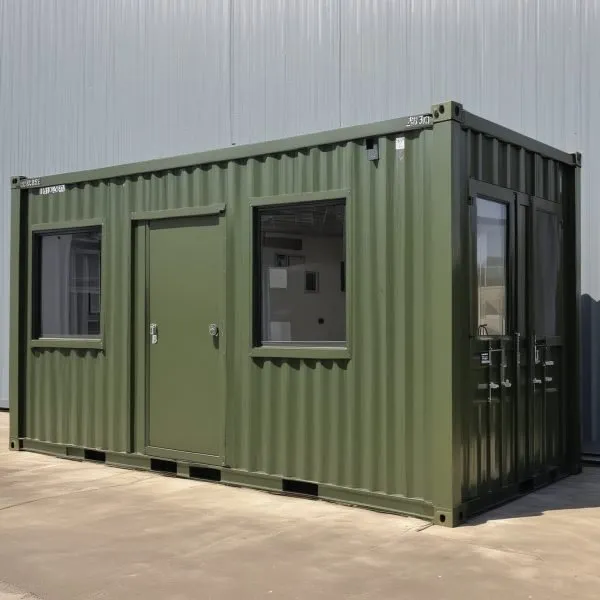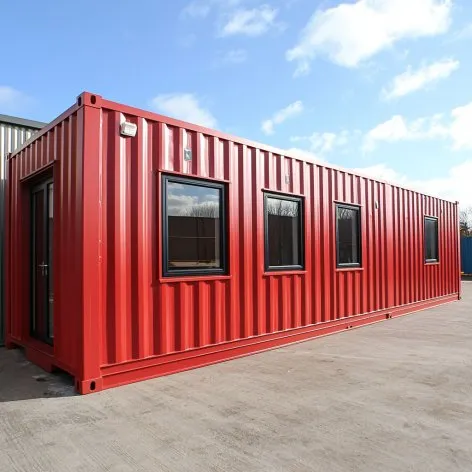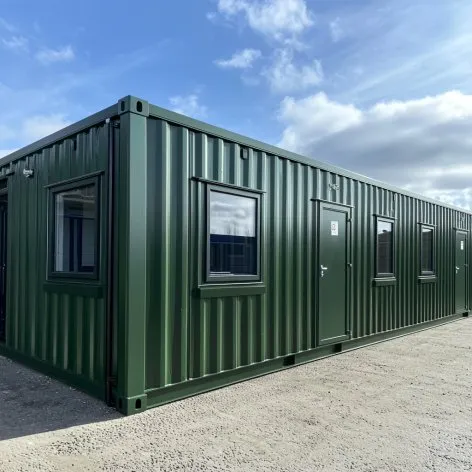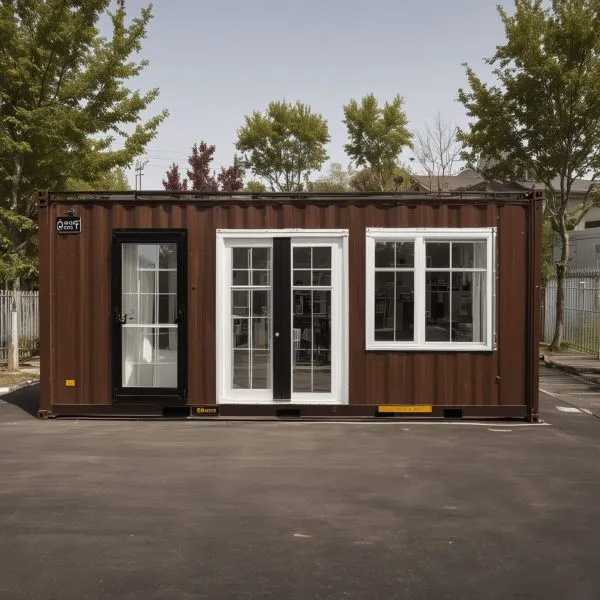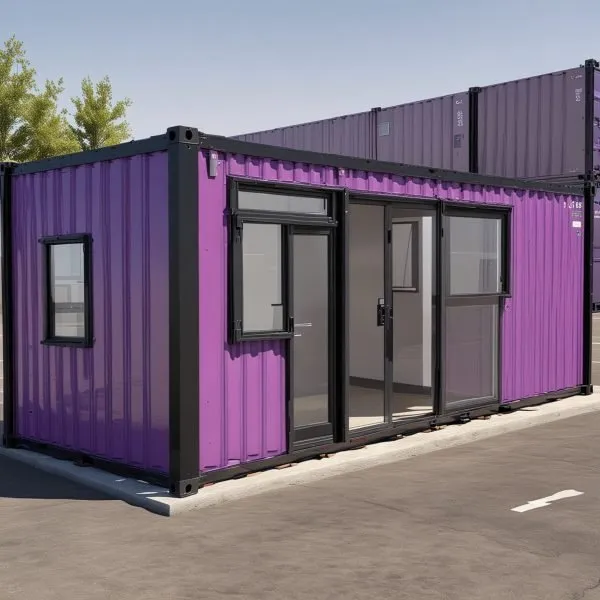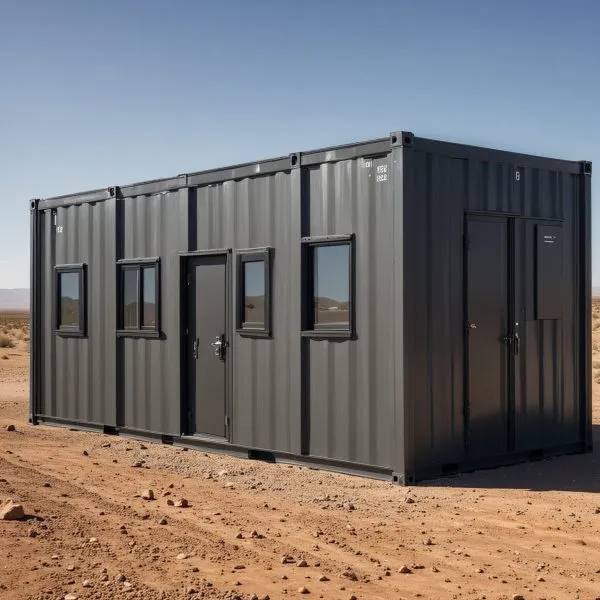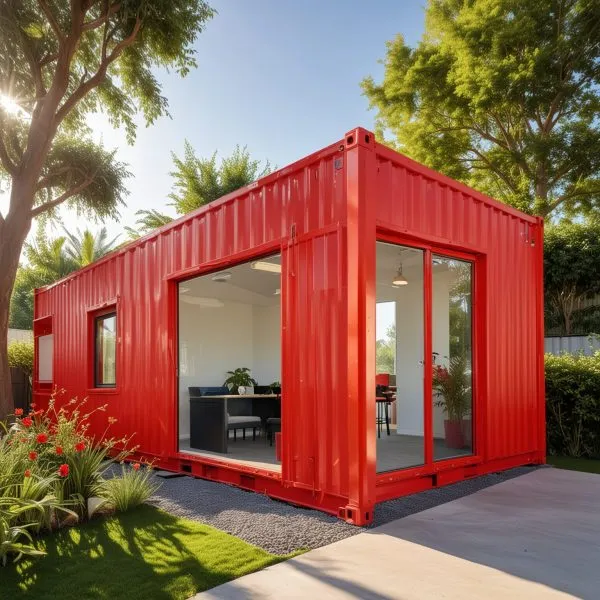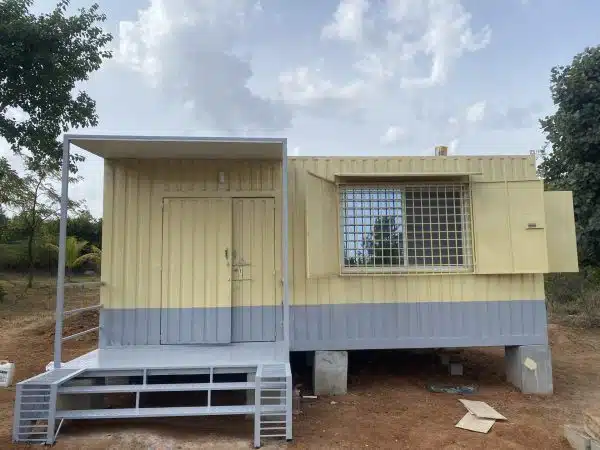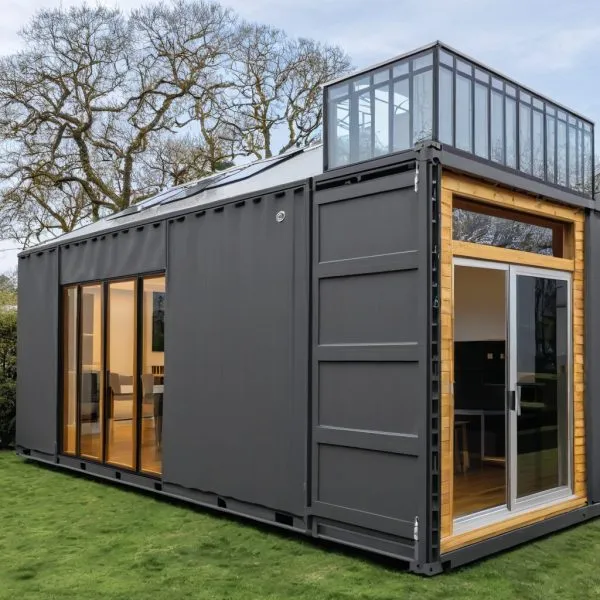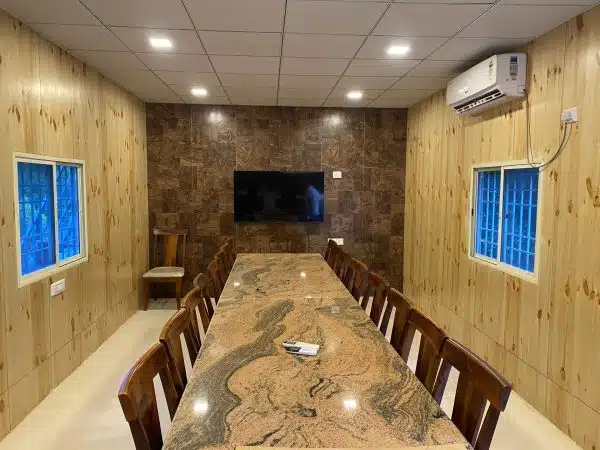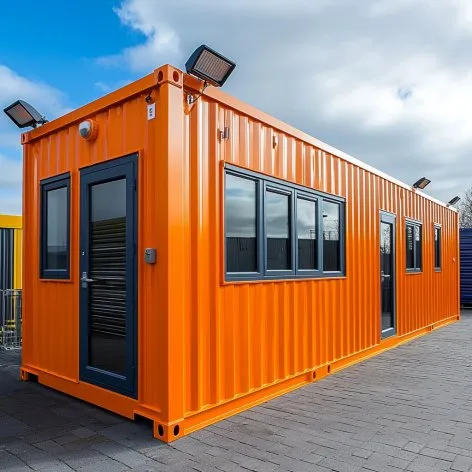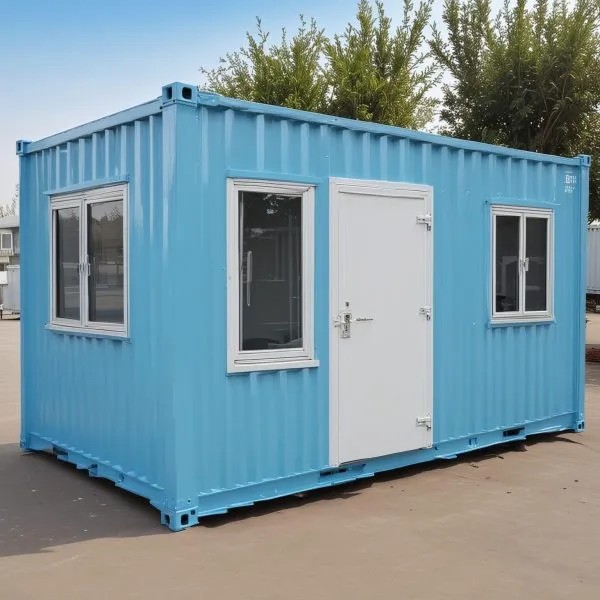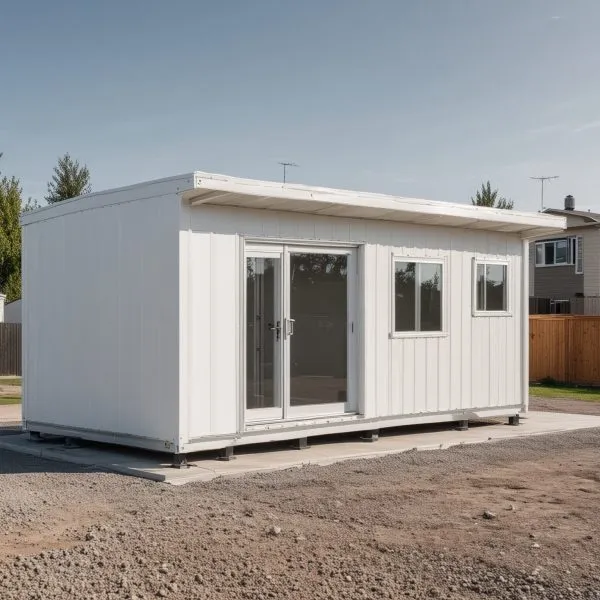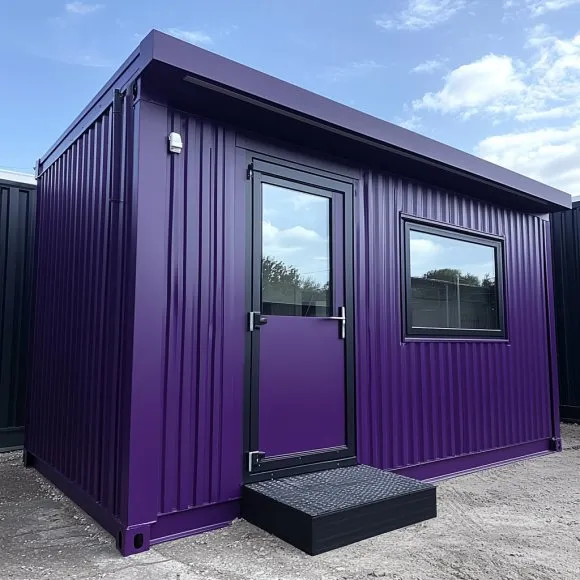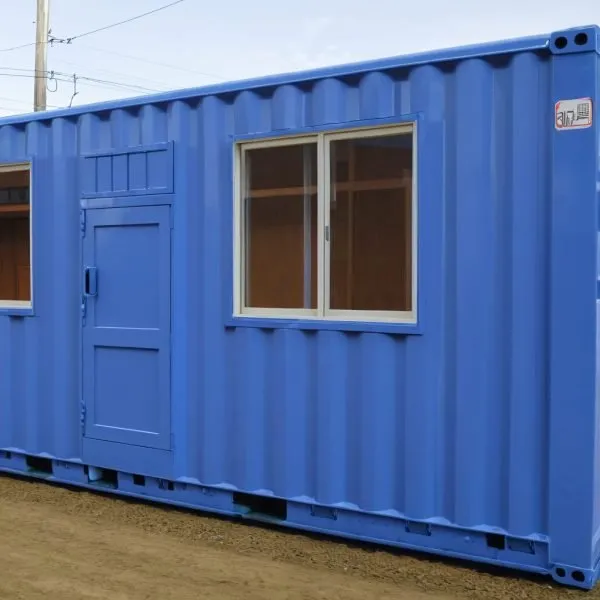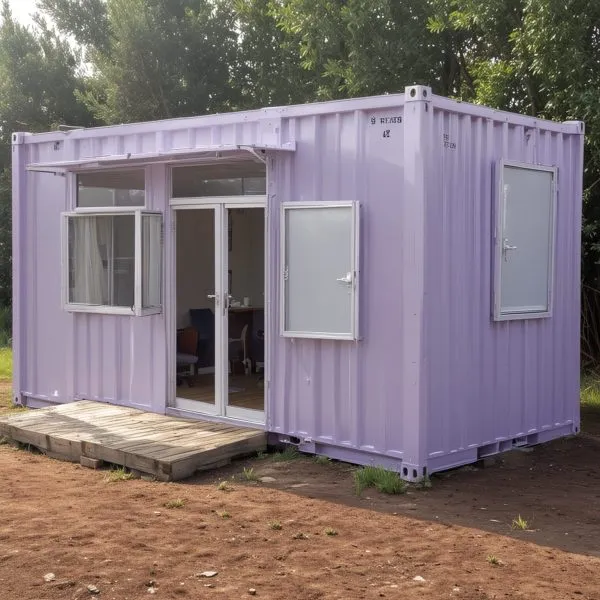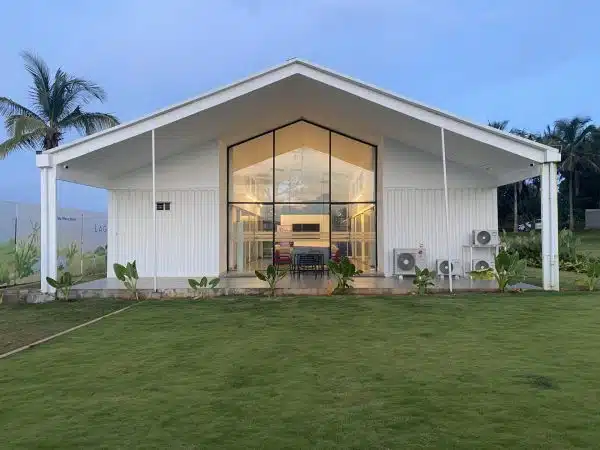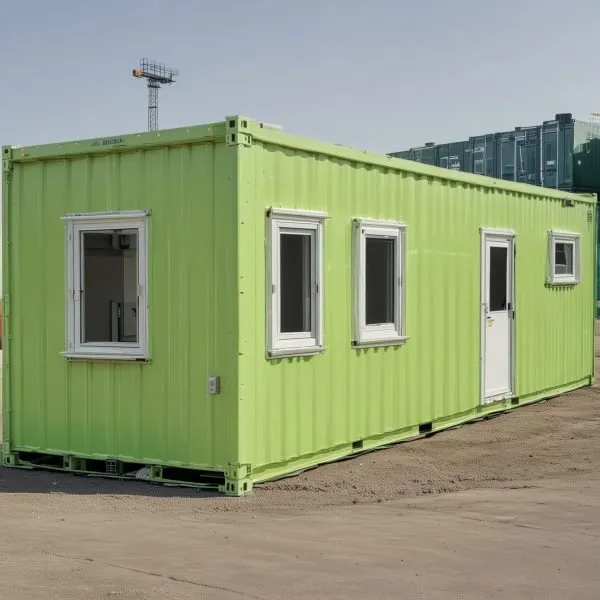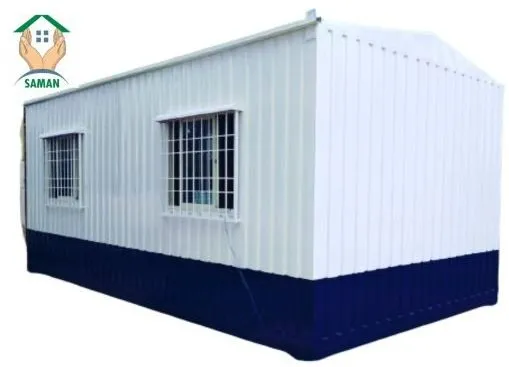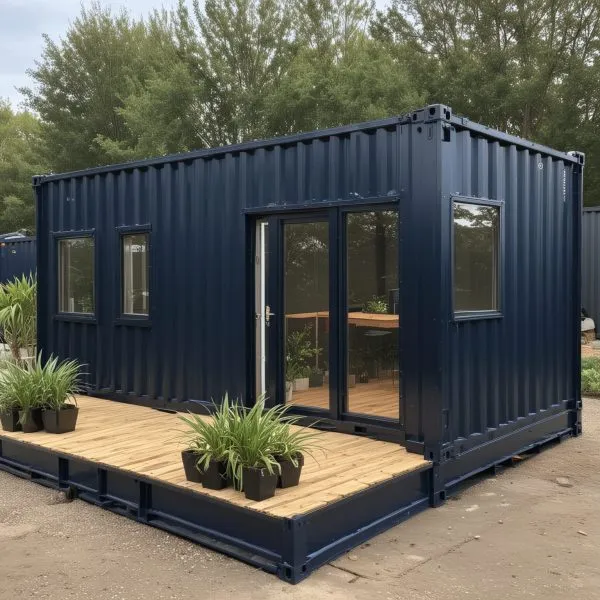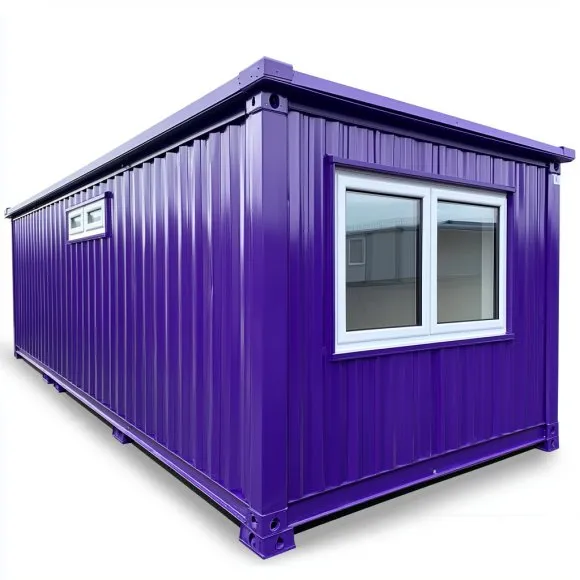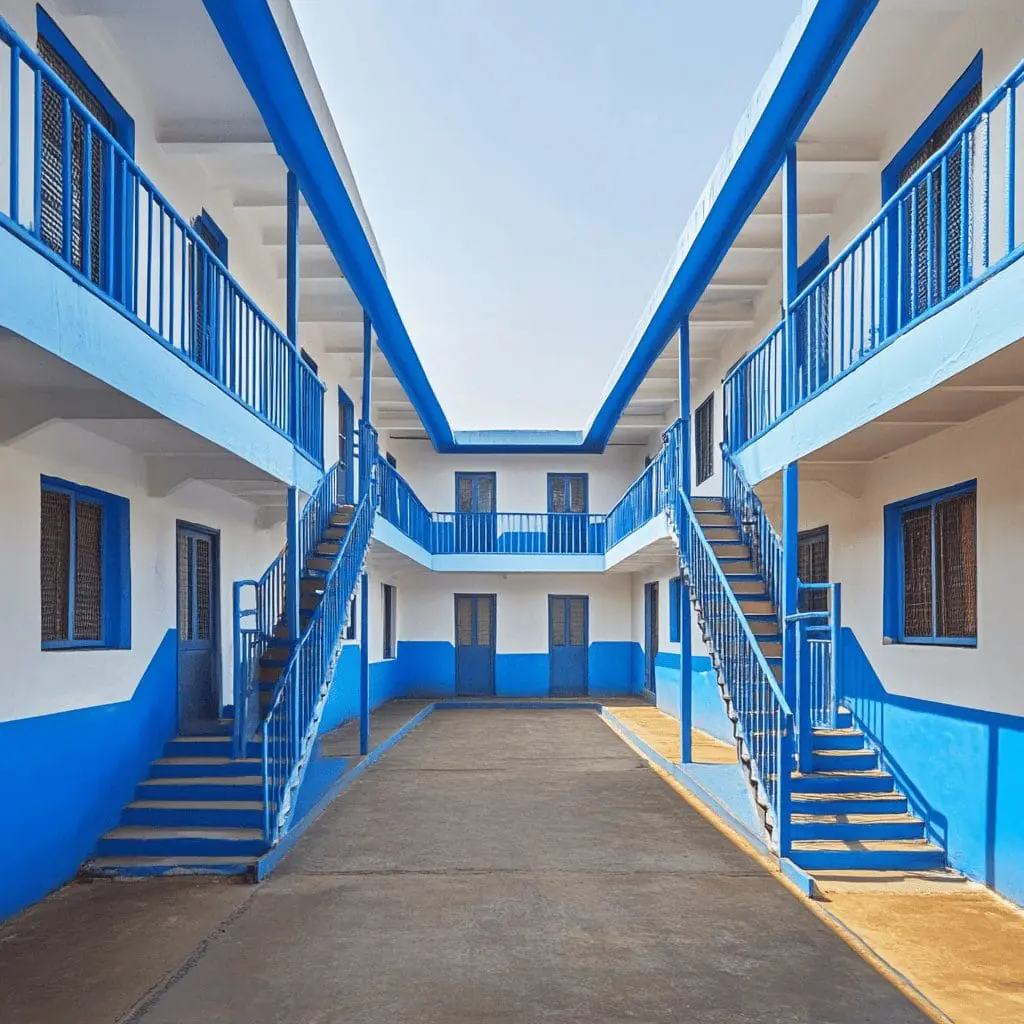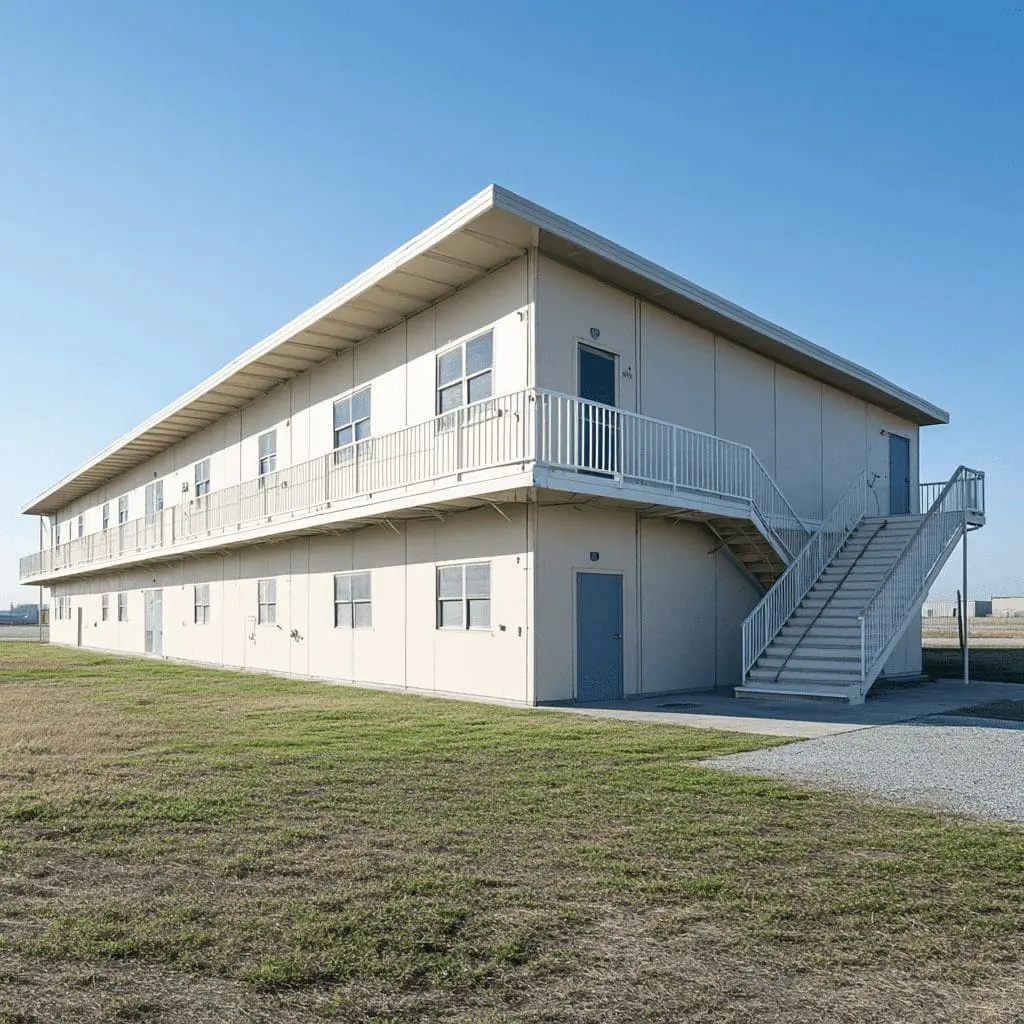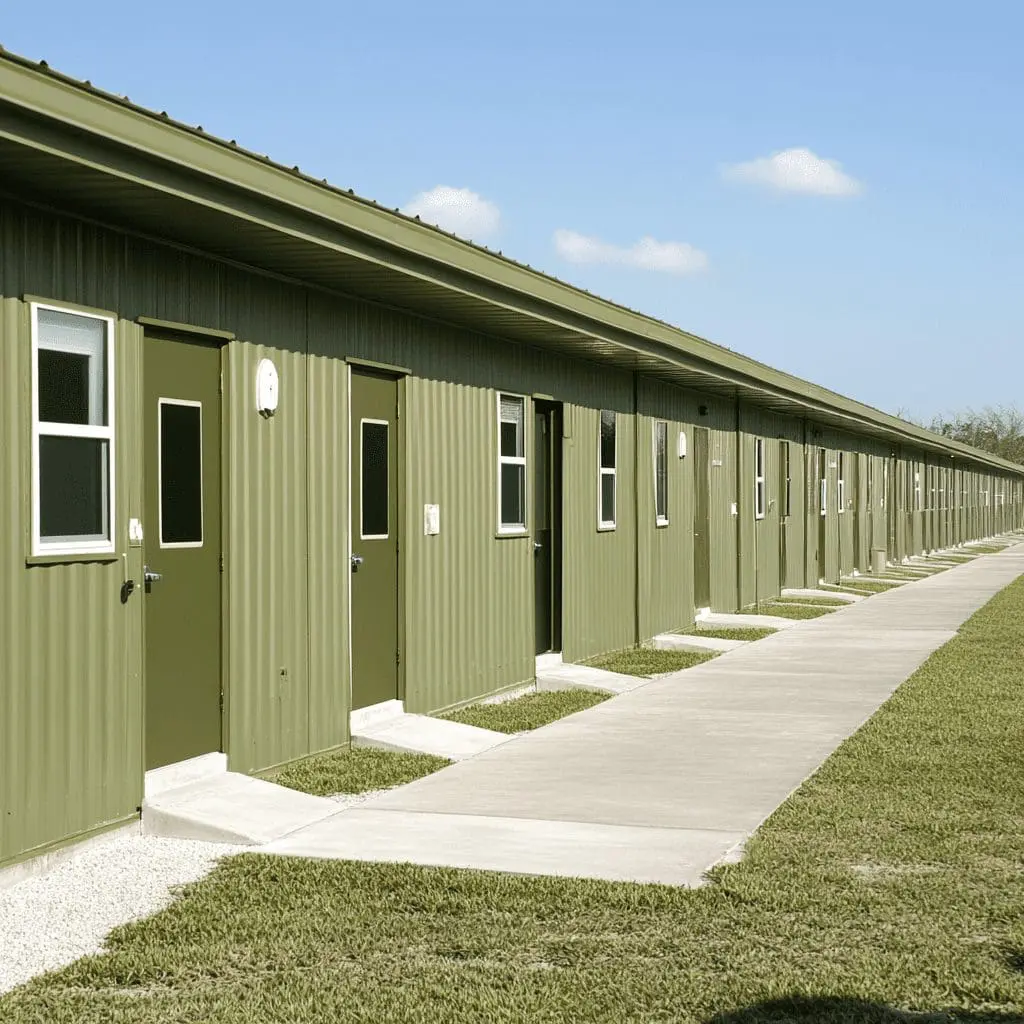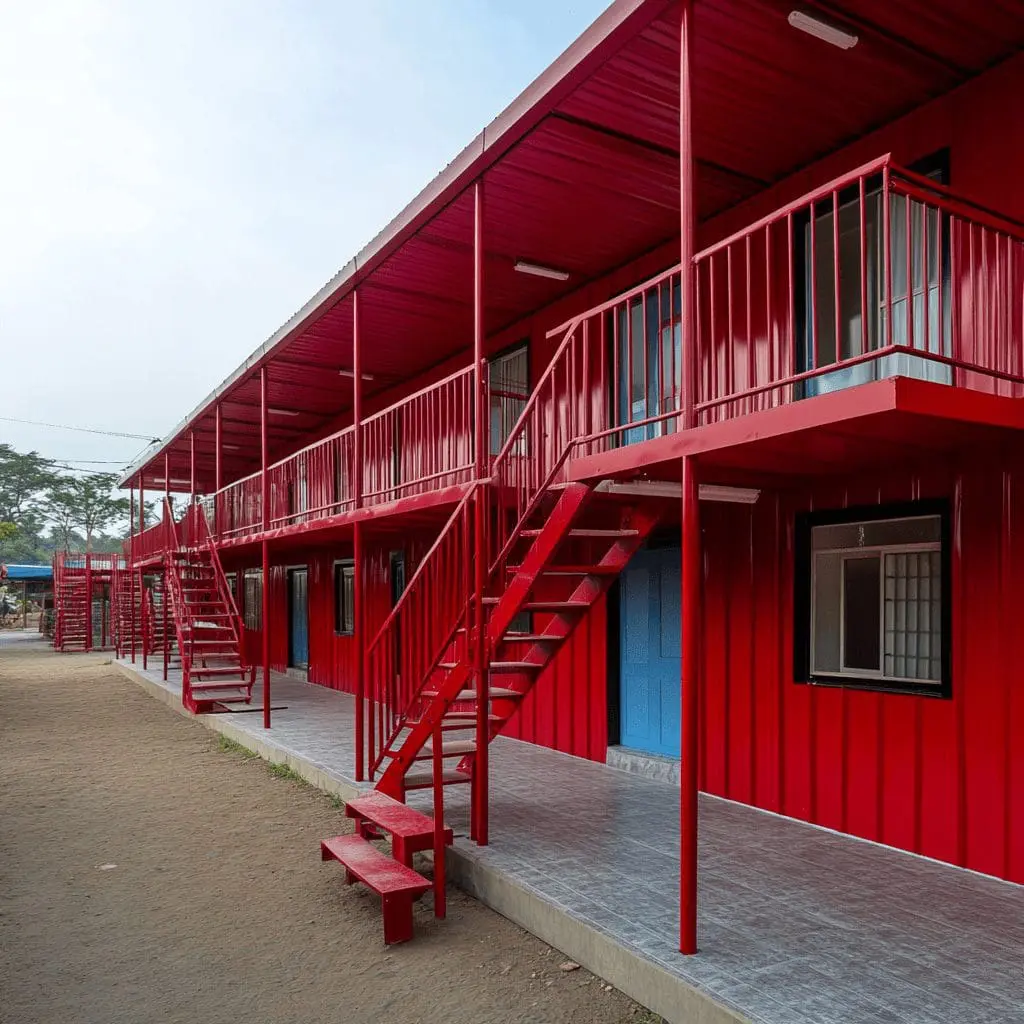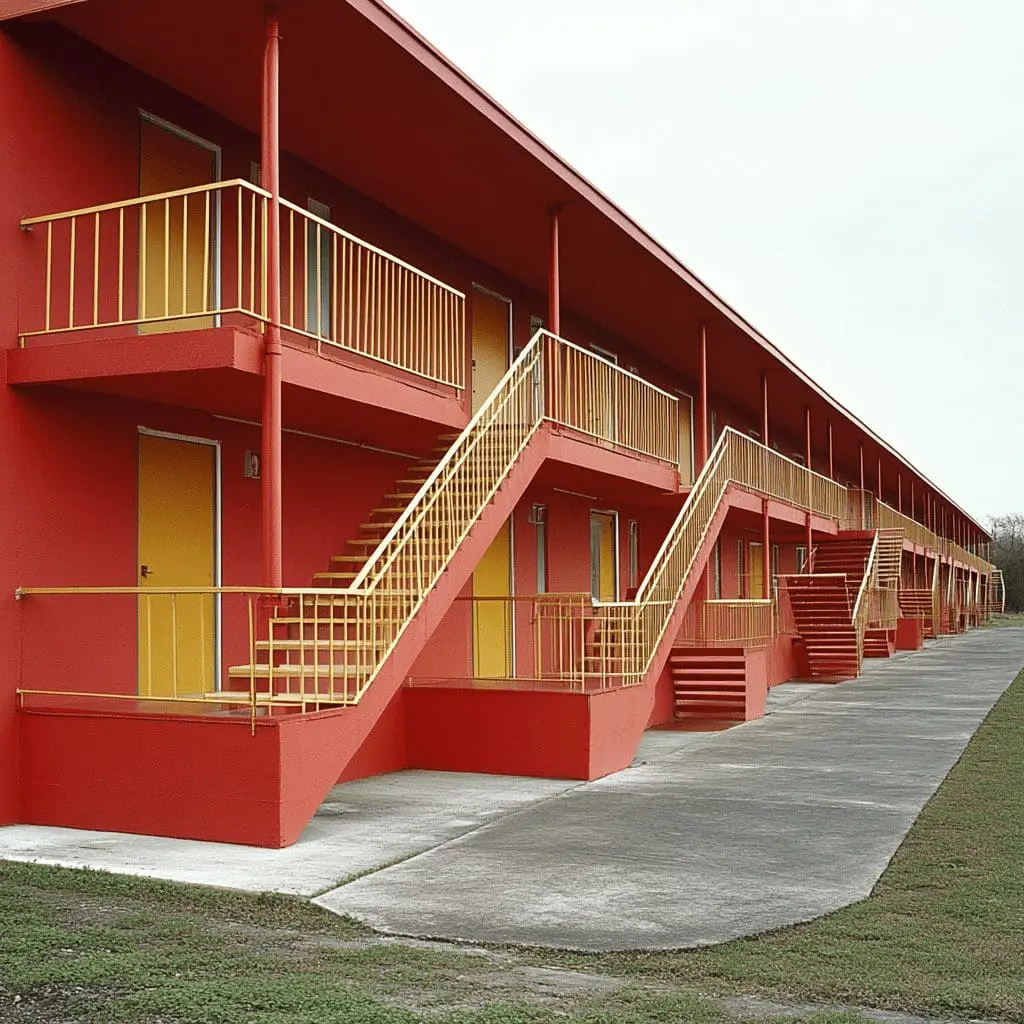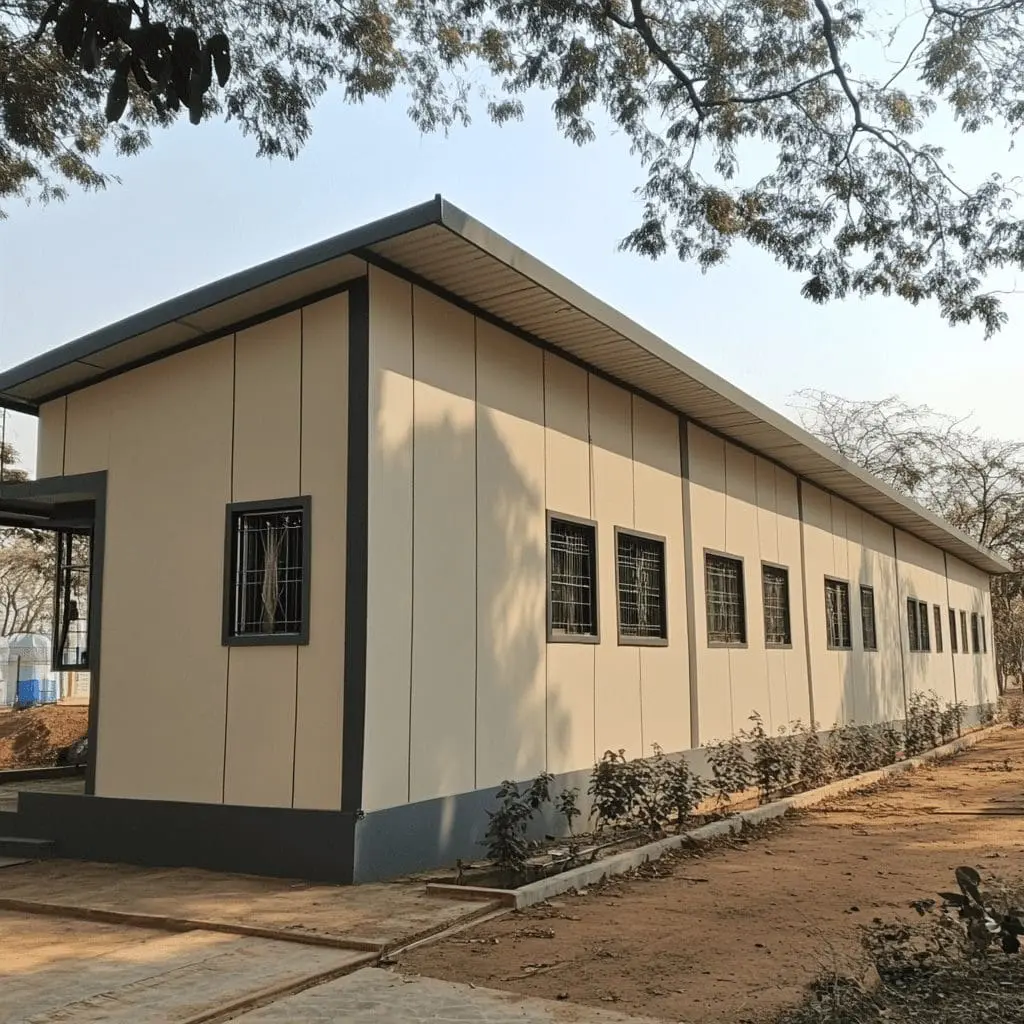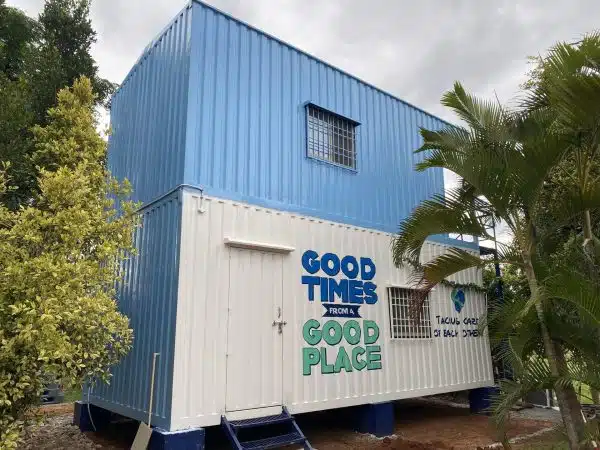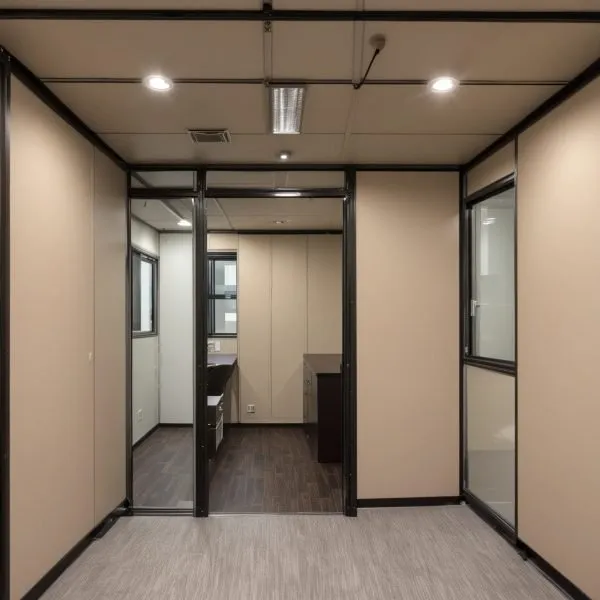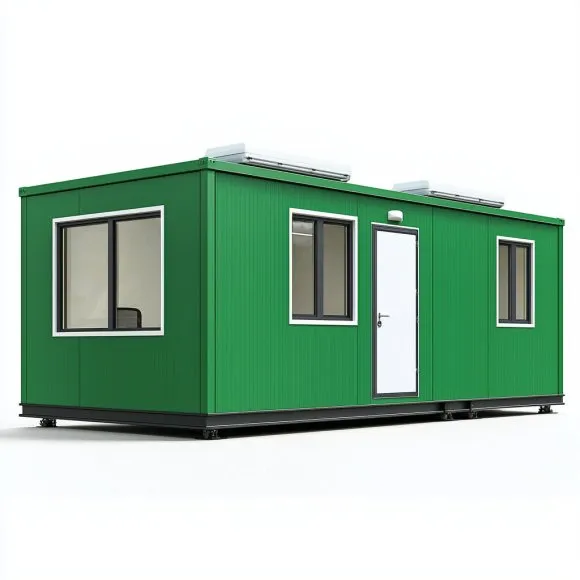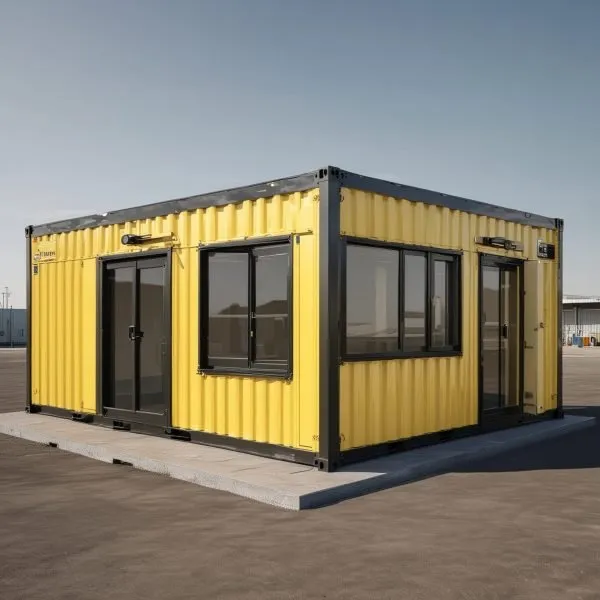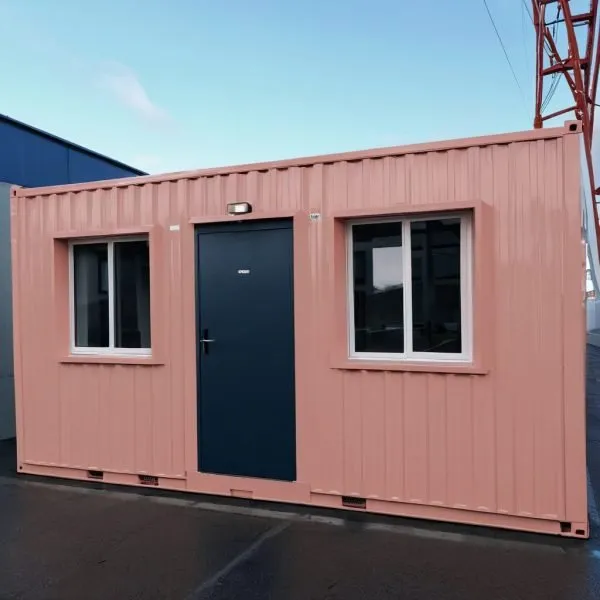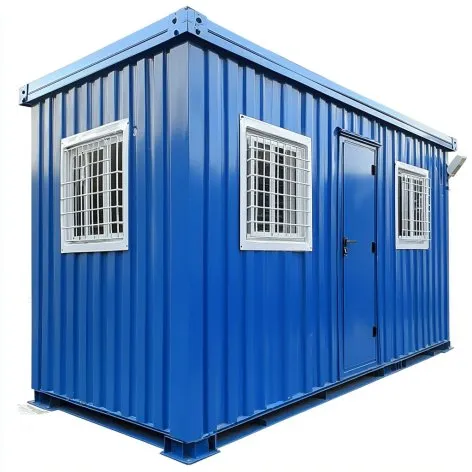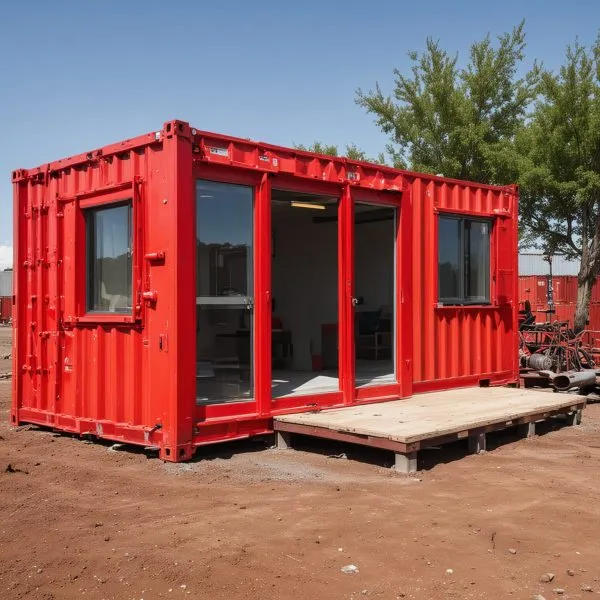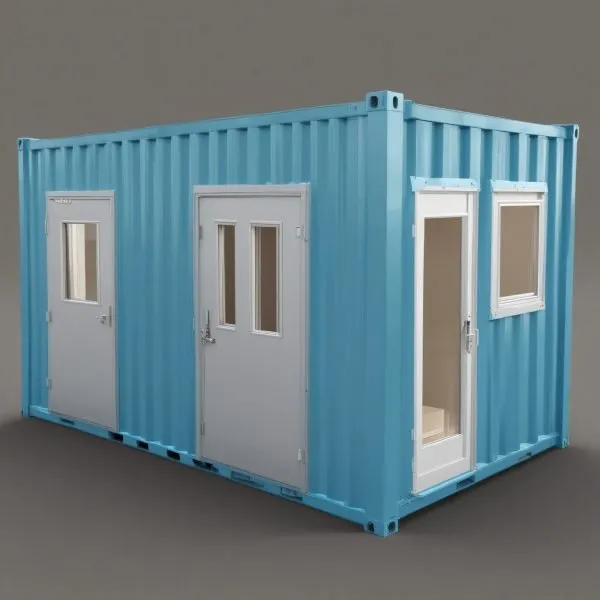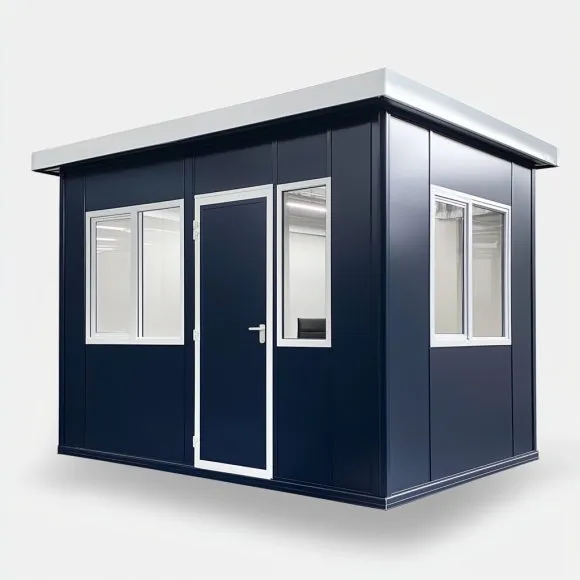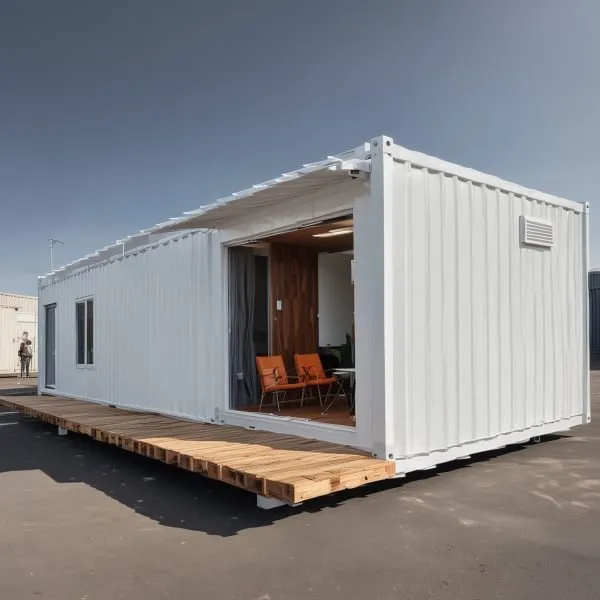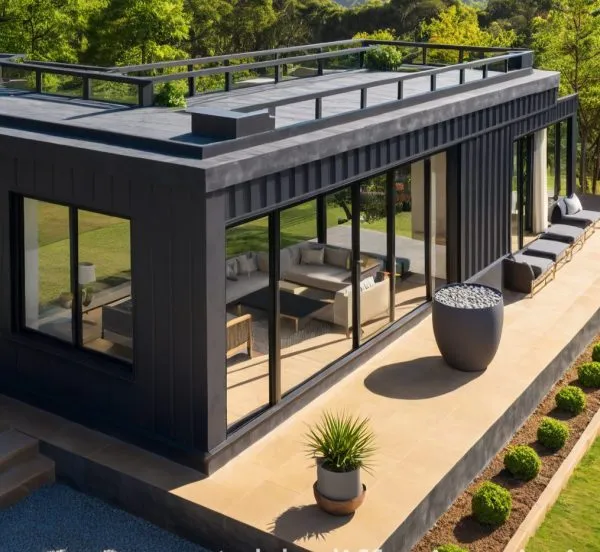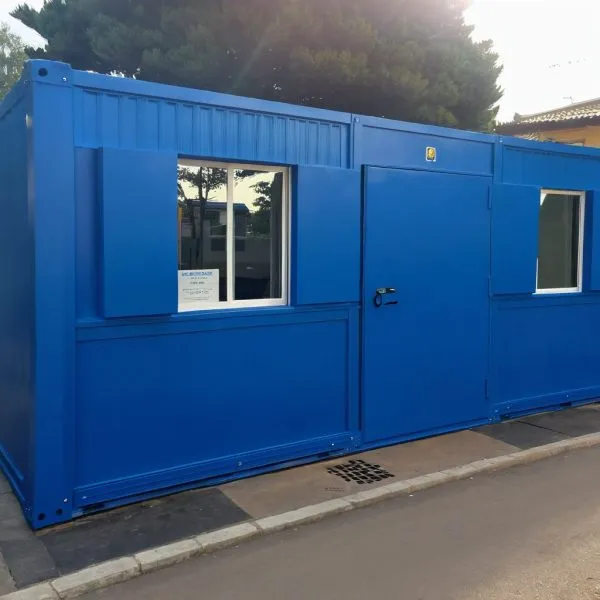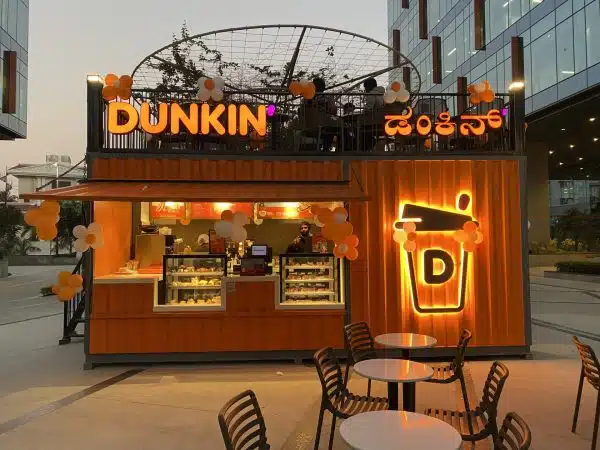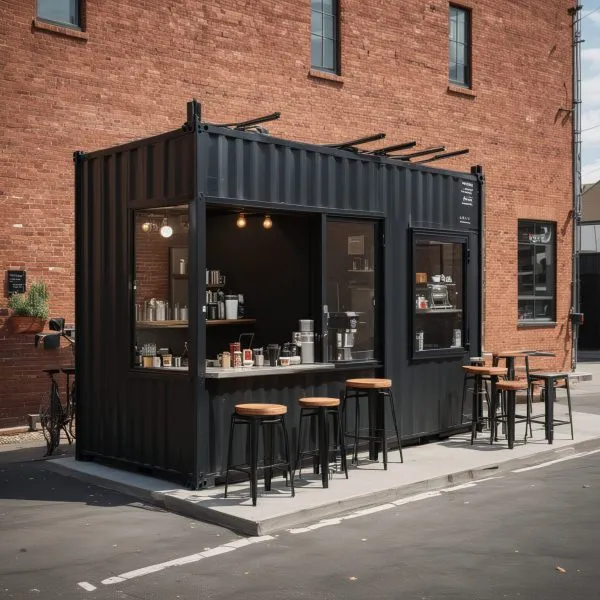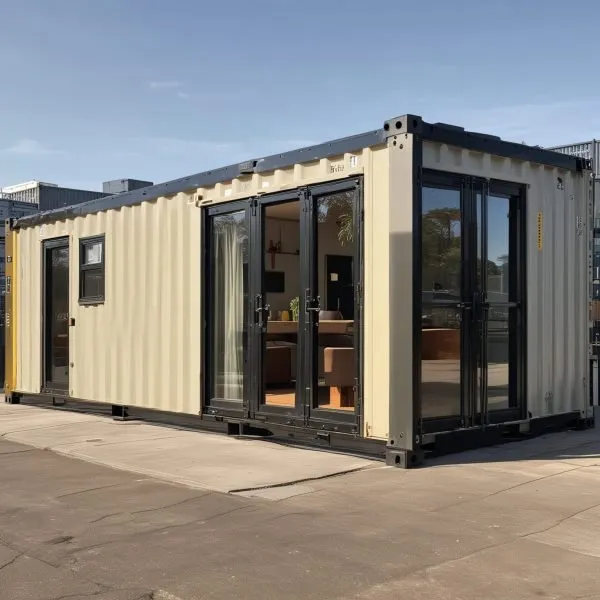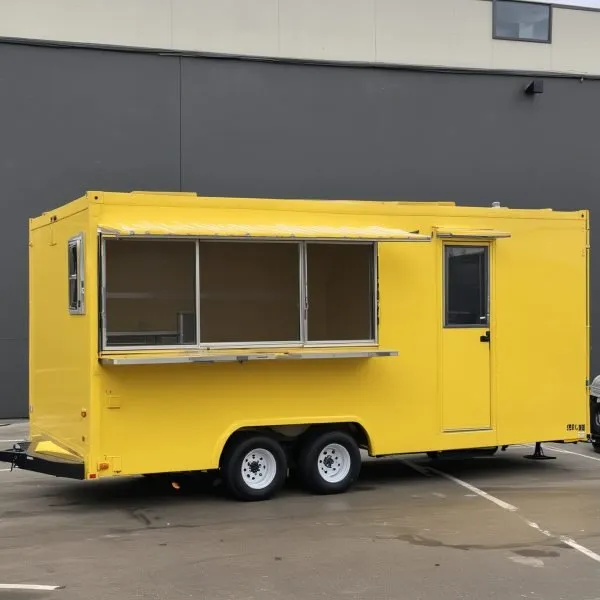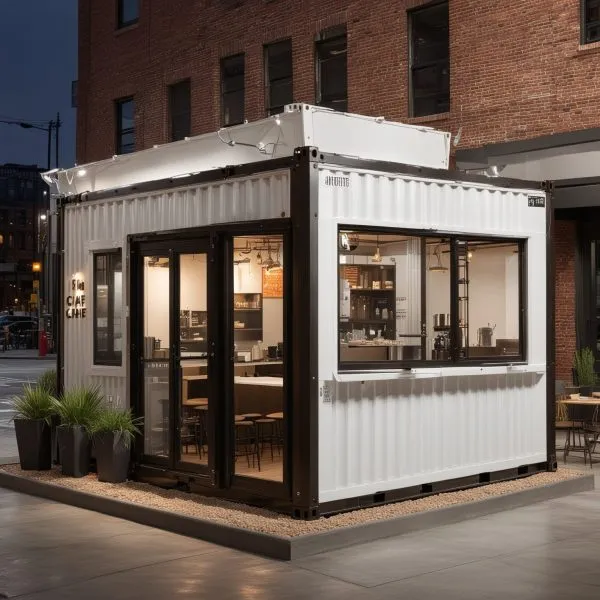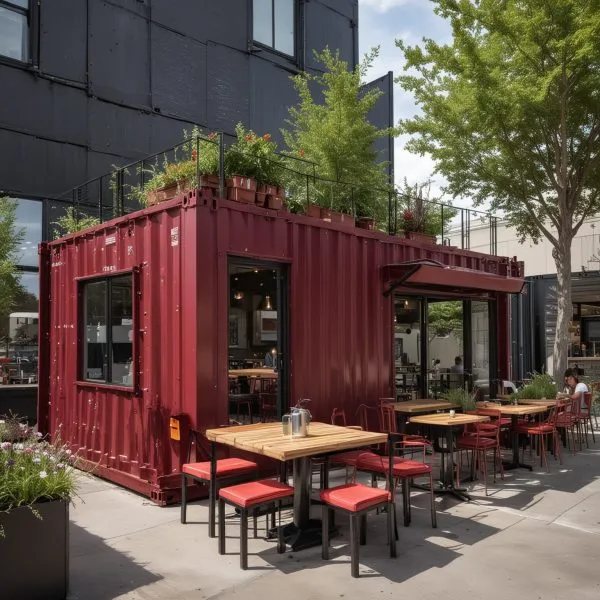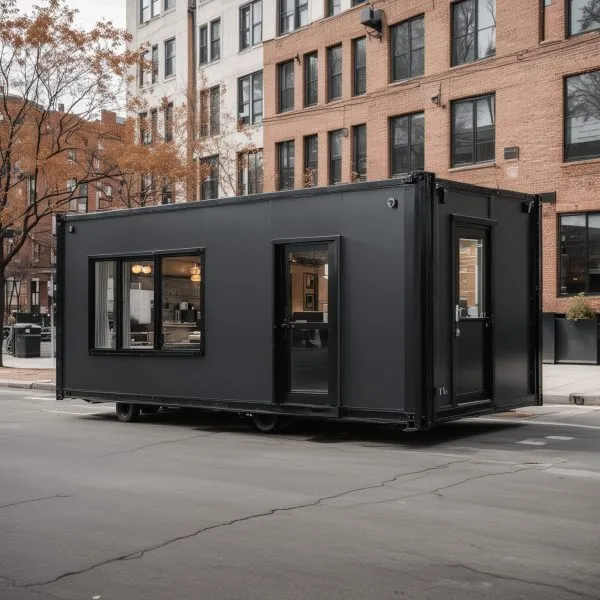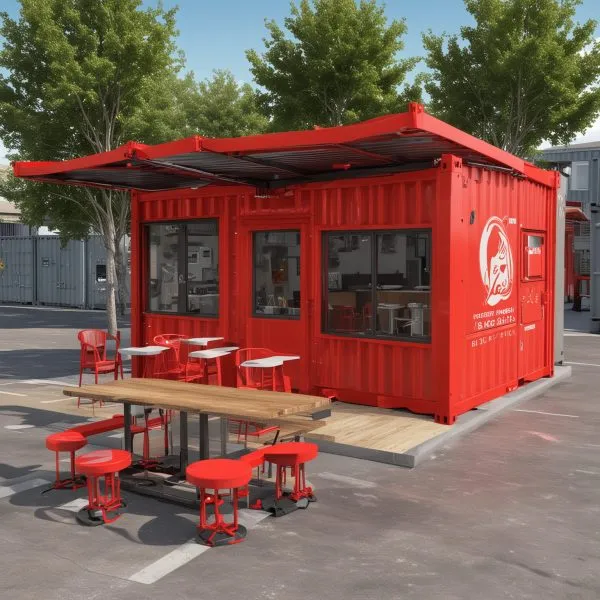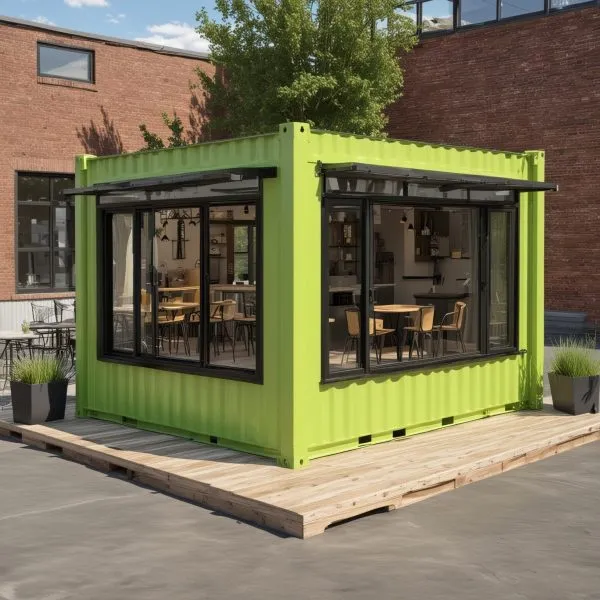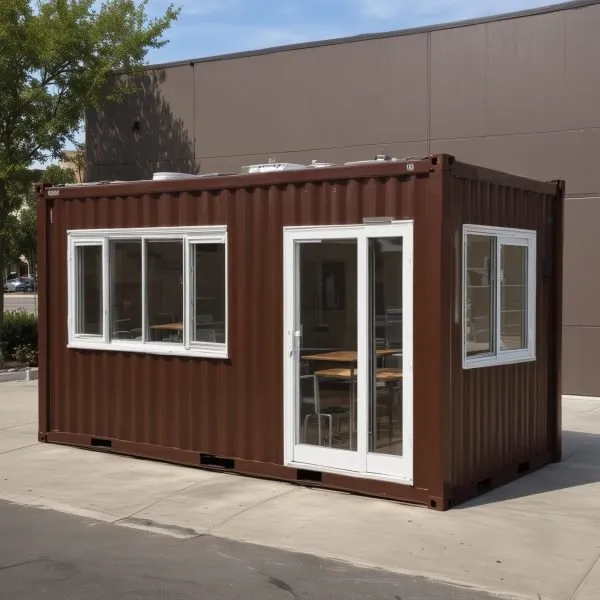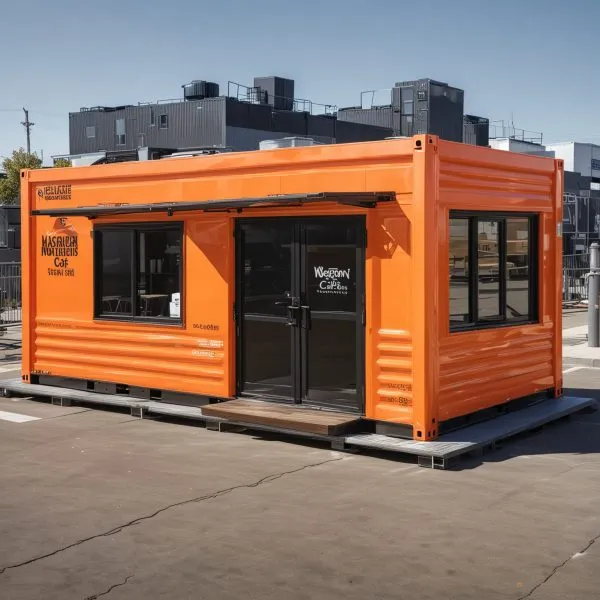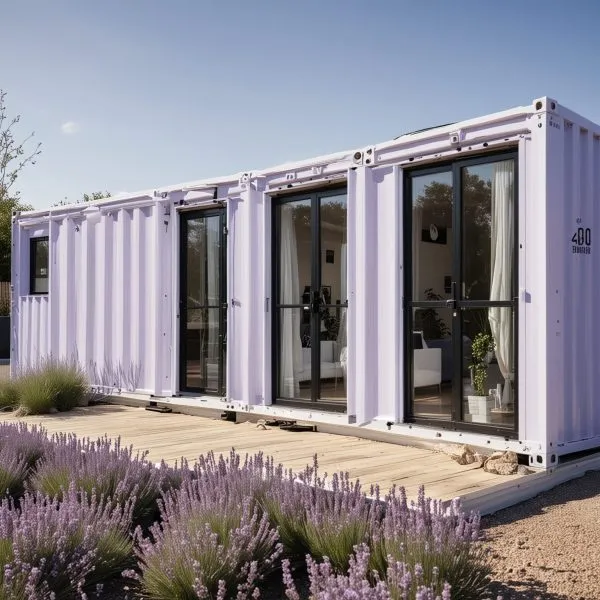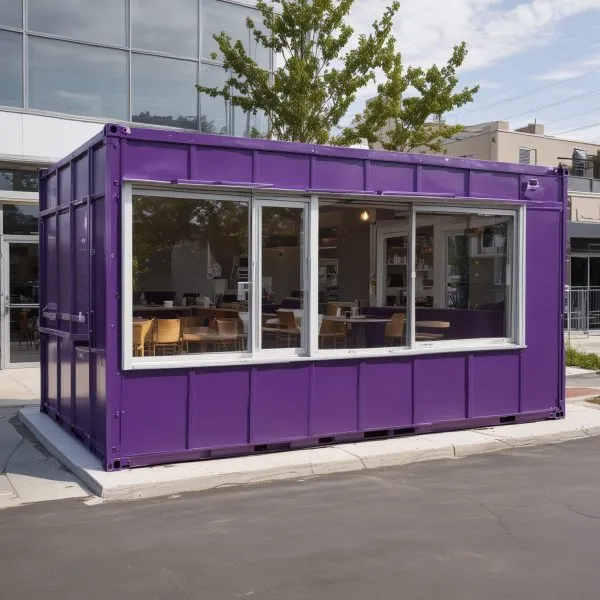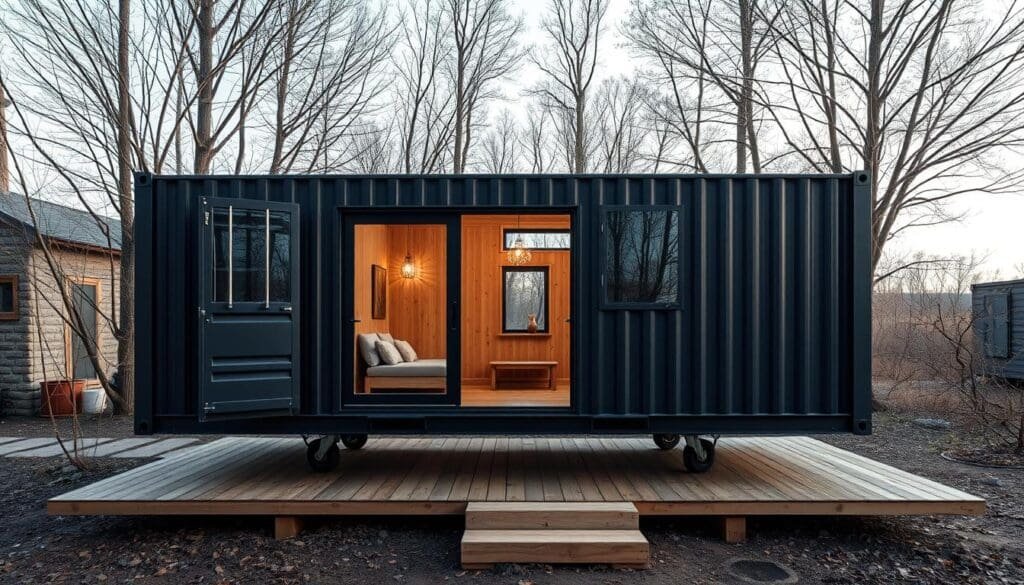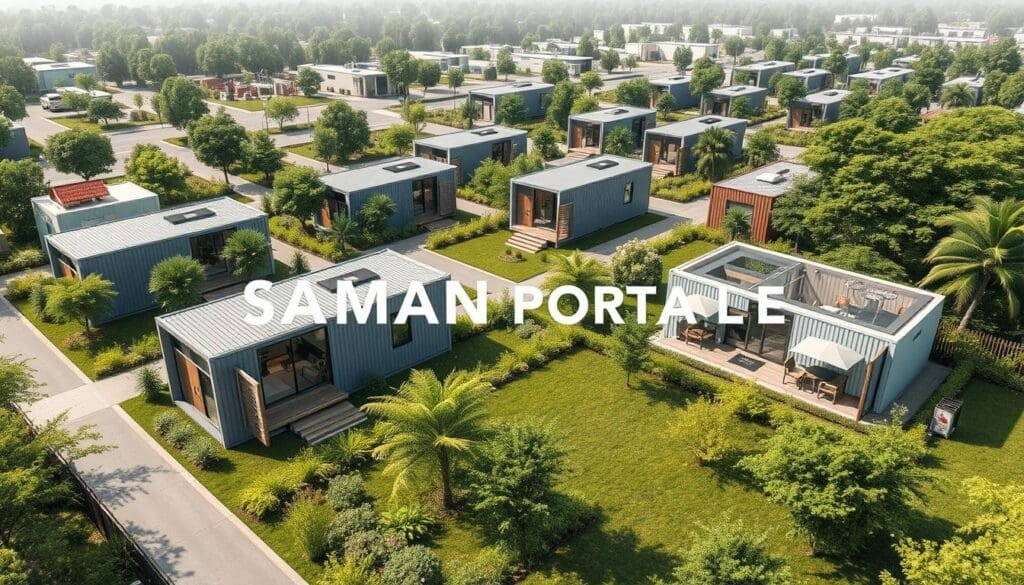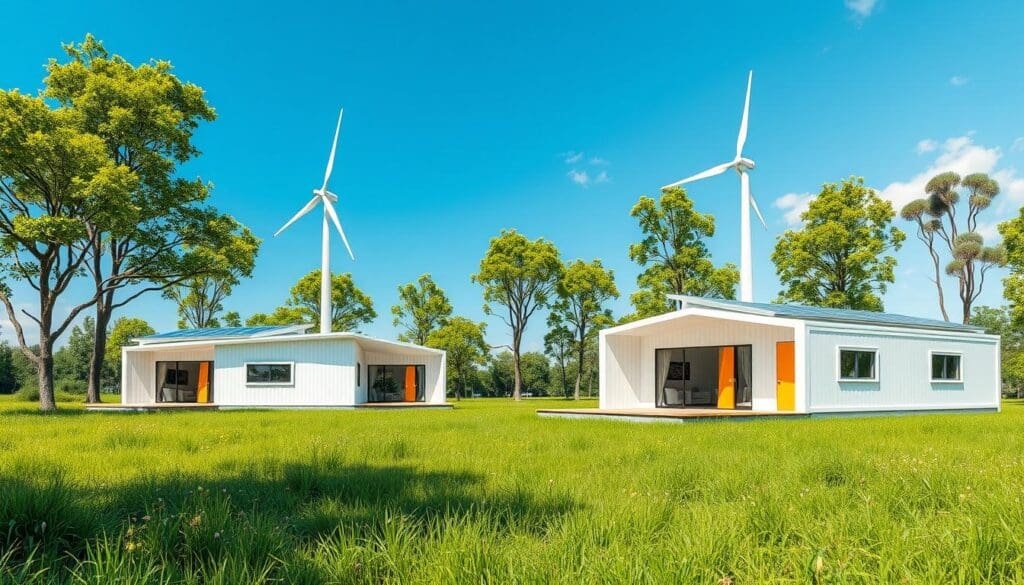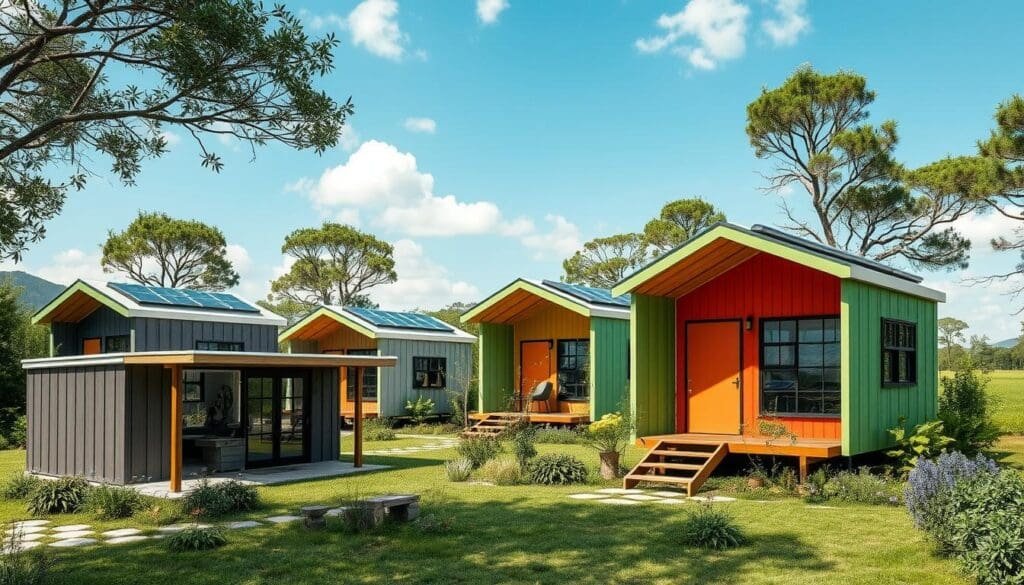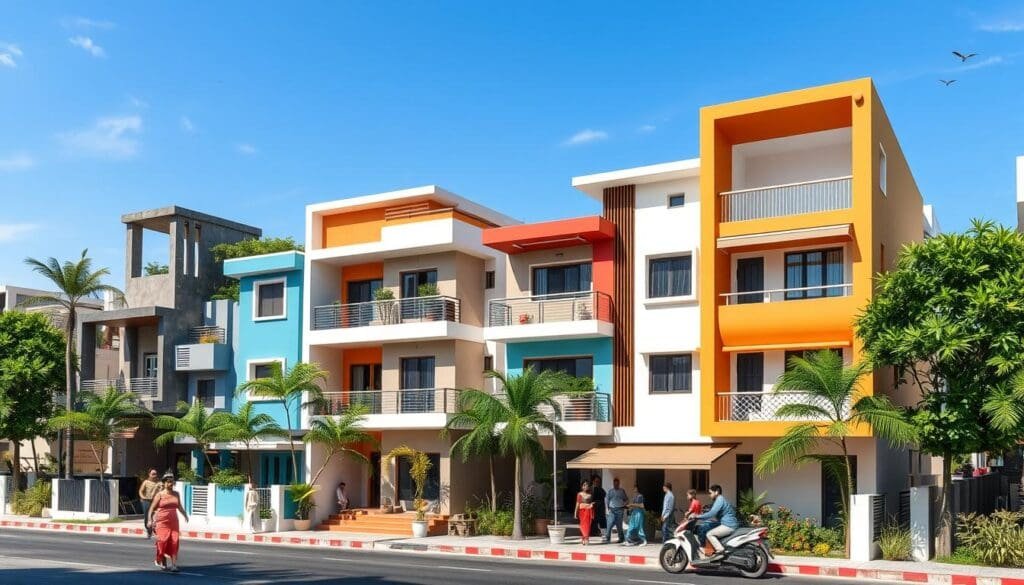Designing Durable Container Structures for Eco-Friendly Living and Workspaces
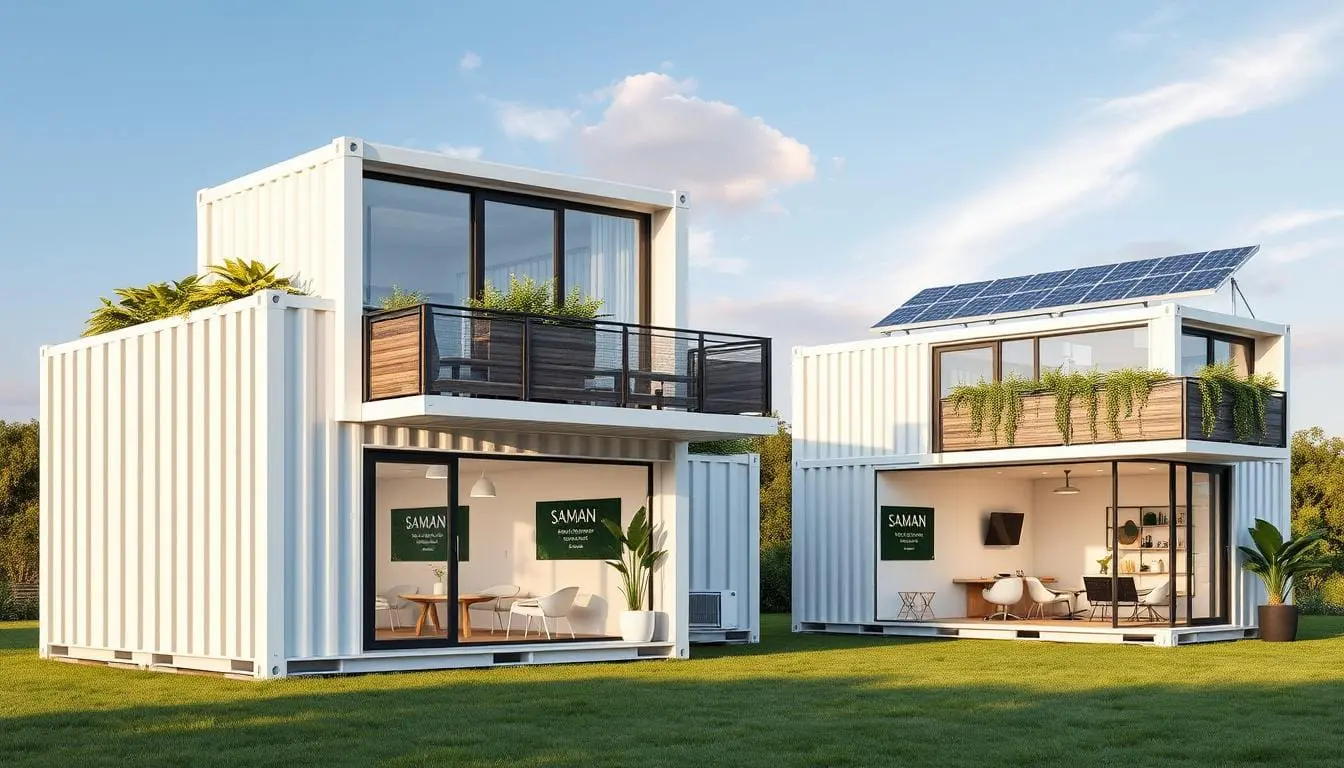
Businesses around the world are focusing on being green. They want to make workspaces that are both affordable and good for the planet. Shipping containers might be the answer. They’re being used to create offices that are both cost-effective and eco-friendly.
Looking for versatile workspace solutions? Explore Container Office Designs and Plans to create sustainable and flexible office spaces tailored to your business needs.
Key Takeaways
- Shipping container offices are made from strong, recyclable steel. They often use eco-friendly insulation like sheep’s wool or recycled cotton.
- Features like double-glazed windows and solar panels make these offices more sustainable.
- Container offices are great for remote spots or businesses wanting to lessen their environmental footprint.
- They can be customized to fit your needs. This means you can add new containers as needed, making them flexible and versatile.
- The modular design of container offices makes them easy to move. You can also stack or combine them to create bigger spaces.
Understanding the Evolution of Container Structures and Architecture
Shipping container buildings have changed a lot over time. They went from simple reuse to being modern, green building options. This change helps solve big city problems like too many people, expensive homes, and caring for the planet.
The Rise of Sustainable Building Solutions
Container homes and offices mix industrial style with green living. They challenge old ideas of homes and offices. Containers are light, easy to move, and cheap. They’re great for those wanting something new, affordable, and good for the earth.
Historical Development of Container Repurposing
The idea of using containers for building started in the 1950s. Back then, they were just for storing and moving goods. But people soon saw they could be used for building too. Big steps in container architecture include Docker in 2013 and Kubernetes in 2014.
Modern Applications in Urban Development
Today, container tech is used in many ways. It’s great for moving around, growing as needed, and easy to set up. This makes container buildings a smart choice for cities. They offer a cheap, flexible, and green option compared to old buildings.
Materials and Components of Container Structure Design
Creating strong and green container structures needs the right materials and parts. Corten steel is a top pick because it stands up well to weather. It forms a protective layer that keeps it strong against tough weather.
Insulation is key for keeping energy use down and controlling the climate. Plans often use eco-friendly insulations like spray foam or rigid panels. Adding energy-saving lights and floors made from bamboo or recycled rubber makes these structures even greener.
When designing container plans architecture and shipping container architecture plans, picking the right containers is important. It’s also about using space wisely and adding green energy sources like solar panels or wind turbines. Companies that make containers help make sure they’re up to the task for offices, homes, or businesses.
- Corten steel: Highly durable and weather-resistant material for container structures
- Insulation: Crucial for energy efficiency and climate control, with options like spray foam or rigid panels
- Lighting and flooring: Energy-efficient lighting and sustainable flooring materials like bamboo or recycled rubber
- Renewable energy: Integration of solar panels, wind turbines, or other renewable energy sources
- Container selection and optimization: Careful selection and utilization of container dimensions and layout
- Fabrication expertise: Crucial role of container fabrication companies in sourcing and customizing containers
Discover Versatile Shipping Container Buildings that combine innovative designs with sustainable materials for long-lasting use.
Architects and designers can make container plans architecture and shipping container architecture plans strong, useful, and good for the planet. This is done by picking the right materials and adding important parts.
Sustainable Features in Container Office Spaces
Container office designs are becoming more popular for being eco-friendly and cost-effective. They offer a unique look and include sustainable features to reduce their environmental impact.
Energy-Efficient Lighting and Climate Control
Container offices focus on saving energy. They use LED lights that use less electricity and produce less heat than old lights. They also have smart climate control to keep the temperature right all year, cutting down on energy use.
Water Conservation Systems
Container offices also save water. They have low-flow fixtures and systems to collect rainwater. These help cut down water use and support sustainable water practices.
Renewable Energy Integration
Container offices are adding solar panels to use renewable energy. This lets them make their own electricity and use less from the grid. It also cuts down their carbon footprint.
Container offices are more than just energy and water savers. They use eco-friendly materials like steel to lessen their environmental impact. With smart design and resource use, they show how workspaces can be both useful and green.
Innovative Customization Ideas for Container Office Spaces
As businesses increasingly seek adaptable and cost-effective solutions, container structures have emerged as a popular choice for office spaces. These repurposed shipping containers provide a blank canvas, allowing for innovative customization that meets the specific needs of any organization. One exciting trend is the integration of sustainable materials and practices into container offices. By utilizing reclaimed wood, recycled insulation, and eco-friendly paints, companies can create spaces that not only minimize environmental impact but also convey a commitment to sustainability.
Another innovative idea is to embrace modular designs within container structures. Companies can combine multiple containers to create expansive, multi-functional workspaces that facilitate collaboration. By incorporating open layouts, movable walls, and ergonomic furniture, these customized offices can adapt to the changing dynamics of a workforce. Additionally, thoughtful placement of windows and outdoor spaces can enhance natural light and create an inspiring work environment that boosts productivity and employee satisfaction.
Customization extends beyond the physical aspects of container offices. Businesses are beginning to incorporate advanced technology to create smarter workspaces. From automated climate control systems to integrated multimedia setups for presentations, technology can be seamlessly embedded within container structures to enhance functionality. Moreover, incorporating smart security systems can ensure the safety and accessibility of these unique office environments, tailoring them to fit modern workplace demands.
Ultimately, the innovative customization of container office spaces offers endless possibilities for creativity and efficiency. As businesses continue to explore flexible working arrangements and adaptive spaces, container structures present a versatile solution. By embracing sustainable practices, modular designs, and advanced technology, companies can create customized offices that not only meet their operational needs but also reflect their brand values and promote a positive work culture.
Container Structure Planning and Layout Optimization
Creating efficient container structures needs careful planning and layout optimization. We assess the space available and decide on the layout. We also add modular furniture and storage solutions. We consider the number of employees, workstations, meeting areas, and amenities for functionality and space use.
Good container designs are flexible, allowing for changes or growth. Layout optimization keeps the structure eco-friendly while being functional. By planning well, businesses can make sustainable and adaptable workspaces that meet their changing needs.
- Assess available space and determine layout requirements
- Incorporate modular furniture and storage solutions
- Optimize layout for efficient use of space
- Ensure flexibility for future expansion or modification
- Maintain eco-friendly features while optimizing functionality
The secret to great container plans architecture and shipping container architecture plans is a thoughtful design. It balances the workspace’s needs with the green benefits of using repurposed containers. By focusing on layout, businesses can make unique, green, and flexible container structures. These support their growth and success.
Maximize space and efficiency with Comprehensive Container Plans Architecture designed for modern workspaces.
Environmental Benefits of Container Buildings
Shipping container buildings are becoming a green choice. They use old materials, cutting down on carbon emissions from building. Corten steel makes them last longer, adding to their green appeal.
Container buildings save resources. They use less material and energy than regular buildings. This helps the environment and supports a circular economy.
Carbon Footprint Reduction
Container buildings cut down on carbon emissions. They make shipping more efficient, using less fuel and gas. Using Corten steel also lowers the carbon footprint of new buildings.
Resource Conservation Impact
Container buildings are good for the planet. They use materials that would otherwise be wasted. This shows how they can lead to a greener future in construction.
Waste Reduction Strategies
Container buildings help reduce waste. They reuse metals and wood, keeping them out of landfills. In the U.S., millions of tons of waste could be saved this way.
Redefine green construction with Sustainable Shipping Container Architecture Designs that prioritize eco-friendly solutions.
Global Examples of Sustainable Container Architecture
In recent years, the trend of using container structures for sustainable architecture has gained significant traction around the globe. These innovative building solutions utilize repurposed shipping containers, minimizing waste and reducing the environmental impact typically associated with traditional construction methods. Cities like Amsterdam and London have embraced this trend, showcasing the versatility and functionality of container structures in urban settings. In Amsterdam, a series of container homes serve as temporary housing for refugees, offering a swift and sustainable solution to pressing housing shortages while promoting community engagement and social responsibility.
The use of container structures extends beyond residential applications; they are increasingly seen in commercial and community projects as well. In Africa, for example, modular container coffee shops and restaurants have become popular, providing entrepreneurs with low-cost, flexible spaces that can be easily relocated. This approach not only supports economic development but also champions environmental sustainability by repurposing materials that would otherwise contribute to landfill waste. Not to mention, the modular nature of such buildings allows for quick assembly and disassembly, which can be incredibly beneficial in regions prone to natural disasters.
Container architecture is also making waves in educational settings. In Vancouver, Canada, an innovative school was built entirely from shipping containers, designed to foster creativity and collaboration among students. This project not only demonstrates the potential of container structures within educational contexts but also highlights the importance of adaptable spaces in contemporary design. With features such as open-plan classrooms and outdoor learning areas, these container schools exemplify how sustainability and functionality can merge within a single architectural framework.
The future of sustainable container architecture looks promising, as more designers and architects are increasingly aware of the environmental implications of their work. With ongoing advancements in technology and design, container structures are likely to evolve, incorporating greener materials and energy-efficient practices. As cities continue to face population growth and urban sprawl, the adaptability, affordability, and sustainability of container architecture will play an increasingly vital role in shaping the urban landscape, proving that innovative solutions can arise from a commitment to sustainability and creative thinking.
Insulation and Climate Control Solutions for Container Structures
Creating durable and energy-efficient container structures needs careful thought on insulation and climate control. Good insulation is key, especially in hot or cold areas, to keep the inside temperature steady. This helps cut down on the need for heating and cooling.
Using eco-friendly insulation like recycled denim, sheep’s wool, or cellulose is common in container offices. These materials help keep the temperature right and are good for the planet. The U.S. Department of Energy says heating and cooling use a lot of energy, making insulation very important for saving energy.
- Styrofoam insulation has an R-value of 4 per inch, which is a good choice for containers.
- Batt insulation can reach R-values of 13 for 3.5 inches and 19 for 6 inches, offering great insulation.
- Spray foam insulation has an R-value of 6 per inch, 12 per two inches, and 18 per three inches, making it very effective.
- Mineral wool insulation has an R-value of 13 on walls and 26 on ceilings per inch, and it’s also durable and fire-resistant.
Climate control for container offices also includes passive design and active systems. Passive design uses windows for natural air flow, while active systems use energy-saving HVAC units. The aim is to make the inside comfortable while using less energy and keeping the container strong.
By using these insulation and climate control methods, container offices can work well, save energy, and be comfortable for people. They are a smart and green choice for today’s workspaces.
Plan smarter with Efficient Shipping Container Architecture Plans to create functional and energy-efficient structures.
Innovative Design Elements for Container Workspaces
Shipping container architecture brings new design elements for modern businesses. These structures are perfect for architects and designers. They can make shipping container architecture design both useful and beautiful.
Modular Office Configurations
Container workspaces are known for their modular design. This means businesses can change the layout as needed. It helps use space well.
With this design, offices can have open plans, private areas, and spaces for teamwork. You can even have rooms for meetings or breaks.
Flexible Space Solutions
Shipping container offices fit different work styles and team sizes. They have adjustable parts and movable furniture. This lets employees change their space to suit their work.
This flexibility boosts creativity and productivity. It helps employees work better together.
Interior Design Considerations
Interior design is key for container workspaces. It affects the feel and function of the space. Design choices like natural light, green materials, and biophilic design improve the work environment.
Using shipping container architecture, businesses can make workspaces that are efficient and inspiring. These spaces help employees and support a green future.
From modular offices to multi-container setups, Explore Container Buildings for Every Need to build cost-effective and durable structures.
Urban Integration and Site Planning
Container buildings are becoming more popular in cities. They are great for small or unused spaces. Planning is key to fit them well and follow local rules.
Developers and architects must think about the city’s needs when placing container buildings. They can turn old spaces into lively areas. This helps cities grow in a green way.
Container buildings can also make cities look better. Good design can make public areas more attractive. This improves life for everyone nearby.
For container buildings to work well in cities, careful planning is needed. It’s about following rules, making sure people can get there, and fitting in with the community. This way, cities can become better places to live and work.
To make container buildings fit in cities, consider these important points:
- Zoning and Regulations: It’s vital to follow local laws and get the right permits.
- Accessibility and Connectivity: Place them where people can easily get to them and find what they need.
- Utilities and Infrastructure: Make sure they have the basics like power, water, and sewage.
- Neighborhood Integration: Design them to match the area’s look and feel.
By focusing on these areas, container buildings can be great additions to cities. They meet the needs of businesses and people, making cities better for everyone.
Cost-Effective Construction Methods
Building container offices is a smart way to save money. It’s cheaper than traditional building methods. This approach uses shipping containers, which are strong and can be changed easily. It lets businesses make workspaces that are good for the planet and their wallets.
Budget Planning Strategies
When planning container offices, think about the cost of the containers and site prep. Good budgeting and finding deals can help stay within budget. This way, businesses can get the office they need without overspending.
Material Selection and Sourcing
Choosing the right materials is key to saving money. Pick materials that last long and keep the office warm or cool. Buying materials locally can also save money and help the local community.
Labor and Installation Costs
Container offices are easy to put together, which saves on labor costs. They can be built quickly with fewer workers. This means businesses save money and get their office up faster.
Container offices are a smart choice for businesses. They are affordable, good for the environment, and fit within budget. This method is a great way for companies to save money and still care about the planet.
Green Technology Integration
Sustainability is key in modern shipping container architecture. By adding green technologies, these structures can greatly improve their environmental impact. They use innovative solutions to cut down on carbon emissions and costs.
Solar panels, wind turbines, and hydroelectric systems are used to generate clean energy. This reduces the need for electricity from the grid. Smart home tech also helps by making energy use more efficient, saving on power for heating and lighting.
Water conservation is also a big focus. Systems that recycle greywater and smart irrigation cut down on water use. This not only helps the environment but also saves money in the long run for the people living there.
These green technologies make shipping container buildings better for the planet and more efficient. By using renewable energy, smart tech, and water-saving methods, they set a high standard for green living and working spaces.
- Renewable energy generation through solar panels, wind turbines, or hydroelectric systems
- Smart home technologies for optimized energy usage and climate control
- Greywater recycling systems and smart irrigation for water conservation
- Reduced operational costs and environmental footprint
As more people look for sustainable buildings, adding green tech to shipping containers is a big step towards a greener future.
Future Trends in Green Container Construction
The future of green container construction is poised to redefine how we approach building design and sustainability. As the global population continues to rise, the demand for affordable and environmentally-friendly housing solutions becomes increasingly pressing. Container structures, which utilize repurposed shipping containers as the primary building material, present a unique opportunity to address both accessibility and ecological impact. These modular units are not only cost-effective, but they also reduce waste by reusing materials that might otherwise end up in landfills, making them an attractive option for eco-conscious builders.
One of the most promising trends in green container construction is the integration of advanced technologies to enhance energy efficiency. Innovations such as solar panels, green roofing, and smart home systems allow container structures to operate with minimal energy consumption. As sustainable energy sources become more accessible, builders are leveraging these technologies to create self-sufficient housing units that can support a variety of lifestyles. This not only contributes to reducing the carbon footprint of construction but also paves the way for communities that prioritize renewable energy use.
Another trend gaining traction is the adoption of biophilic design principles in container structures. By incorporating natural elements into these builds—such as living walls, natural lighting, and outdoor green spaces—designers are creating environments that promote well-being and a connection to nature. As more people recognize the mental and physical health benefits associated with biophilic design, the integration of these features will likely become a standard practice in container construction. This shift will transform how we envision urban living, allowing for greener spaces within densely populated areas.
Lastly, the adaptability of container structures makes them ideally suited for various uses beyond traditional housing. From pop-up shops and community centers to emergency shelters and mobile clinics, these versatile units offer quick solutions that can be implemented in response to diverse needs. As the world navigates challenges such as natural disasters and urban overcrowding, the flexibility of container buildings ensures that sustainable and efficient responses are readily available. The future of green container construction is bright, and as innovation continues to drive the industry forward, the potential for these structures to foster resilient, sustainable communities will only grow.
Durability and Maintenance Considerations
Container buildings are known for their durability and ease of maintenance. They are built to last, thanks to their strength from being used in shipping. This makes them great for eco-friendly homes and offices.
Long-term Structural Integrity
Container buildings stay strong with the right fixes and checks. Regular checks help find and fix problems early. This keeps the buildings safe and sound for years.
Preventive Maintenance Protocols
Keeping container buildings in good shape is key. Clean them often to avoid water damage. Check the plumbing and wiring to keep everything working right.
Good air flow is also important. It stops mold and keeps the air fresh. This makes the buildings healthier for everyone.
Weather Resistance Features
Container buildings can handle different weather thanks to special coatings. Adding siding makes them look better and last longer. Keeping the roof and surroundings in good shape helps too.
With the right care, container buildings are a smart choice for homes and offices. They are strong, easy to maintain, and good for the planet. This makes them a great alternative to traditional buildings.
Regulatory Compliance and Building Codes
Shipping container architecture is getting more popular. But, designers and builders must deal with many rules. They need to follow local laws, building codes, and safety standards to make these structures real.
In 2018, the AC462 standards were introduced. Falcon Structures, a top container maker, was the first to get certified. This certification helps speed up the process of getting permits.
- Before 2016, using shipping containers was slow because of code issues.
- AC462 makes it easier to get approval for container buildings.
- At first, the industry found AC462 hard to follow. But, Falcon Structures has become more efficient.
- AC462 ensures containers are safe and quality, helping the industry grow.
Knowing local zoning laws is also key. Cities in the U.S. use zoning laws to plan growth. Even storage containers might have rules, even if not for living.
The International Code Council updates the IRC and IBC regularly. Working with experts can help make sure shipping container architecture plans are up to code. This way, these innovative structures can stay sustainable.
Overcoming Challenges in Shipping Container Architecture
Shipping container architecture has gained significant popularity in recent years, offering innovative solutions for sustainable building practices. However, the journey of transforming these metal boxes into functional living and working spaces is not without its challenges. One of the primary hurdles is the adaptation of container structures to local building codes and regulations. As containers are deemed non-traditional structures, navigating the legal landscape can be complex, requiring builders to engage in thorough research and sometimes extensive modifications to meet safety standards. This bureaucratic maze can delay projects and increase costs, but overcoming these challenges often results in a unique and inventive outcome.
Another significant challenge lies in the inherent limitations of container structures. While they provide a versatile framework for design, their fixed dimensions can restrict creativity and functionality. Builders must think critically about spatial design to ensure that the interior layout meets the clients’ needs and remains efficient. This often involves clever design strategies, such as incorporating open floor plans or utilizing multifunctional furniture. By embracing innovative thinking, architects and designers can maximize the potential of shipping containers, proving that limitations can, in fact, inspire creativity.
Climate adaptation also poses a challenge when it comes to container architecture. These steel boxes can become extremely hot or cold depending on the environment, which requires careful consideration of insulation and ventilation systems. Successful projects often integrate eco-friendly solutions, such as green roofs and passive solar design, ensuring that container structures remain energy-efficient and comfortable for their occupants. Although these adaptations can demand additional resources and engineering expertise, the long-term benefits of creating sustainable and livable spaces make the effort worthwhile.
Ultimately, overcoming challenges in shipping container architecture requires a blend of creativity, technical knowledge, and resilience. By addressing regulatory, design, and environmental hurdles, architects can craft spaces that not only utilize the unique properties of shipping containers but also push the boundaries of conventional architecture. As this trend continues to grow, it will undoubtedly lead to even more innovative solutions that redefine the way we think about building materials and sustainable living.
Conclusion
Container structures are a big step forward in green building. They offer affordable and eco-friendly spaces for living and working. These designs tackle urban problems and help protect our environment.
Shipping containers are strong and can be built quickly and cheaply. Prices start at $1,500 and can go up to $4,500. You can stack them up to 8 high, making them cost-effective.
These buildings are changing urban development. They combine green living, affordability, and modern looks. Projects like the Container Guest House and Container City in London show their potential. As design and tech improve, container buildings will become even more popular.
At SAMAN Portable, we’re committed to sustainable and innovative construction. Learn About SAMAN Portable’s Vision to understand how we’re shaping the future of eco-friendly architecture.
FAQ
What are the key sustainable features of container office spaces?
Container office spaces have many green features. They use energy-saving lights and systems to control the climate. They also save water and use solar panels for power.
How do container structures address urban challenges?
Container structures help solve urban problems. They can turn empty spaces into lively areas. This helps create new communities and workplaces without harming the environment.
What are the cost-effective benefits of container construction?
Building with containers is cheaper than traditional methods. You can plan your budget by looking at the cost of containers, changes, and site prep. Choosing strong, green materials saves money in the long run. Plus, the work is often quicker because containers are ready-made.
How do container structures ensure long-term durability?
Containers are built tough for shipping. They stay strong with the right changes and care. They also resist weather with special coatings and seals.
What are the key environmental benefits of container buildings?
Container buildings are good for the planet. They cut down on carbon by using old materials. They also save resources and energy needed for new buildings. Plus, they can be reused or recycled later.
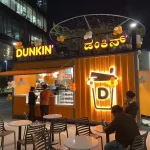 Container Cafe
Container Cafe